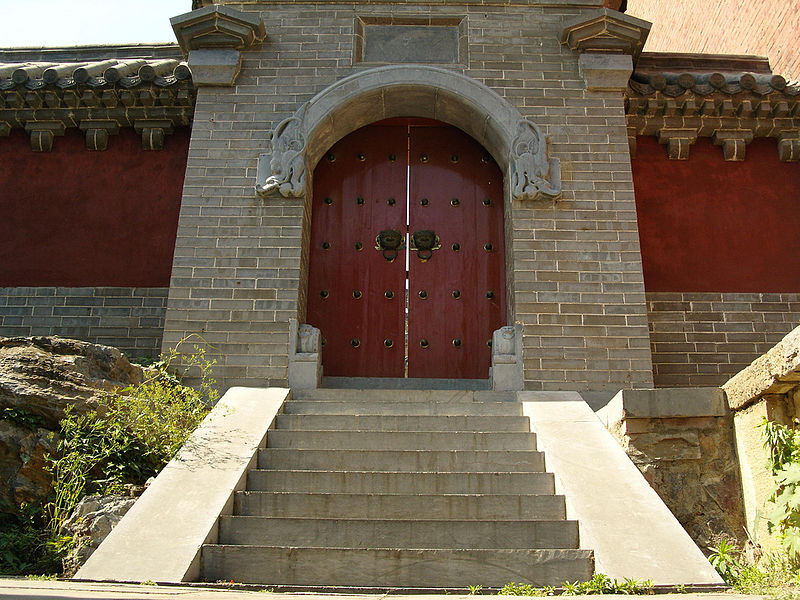





 |
 |
 |
 |
 |
 |
|---|---|---|---|---|---|
 |
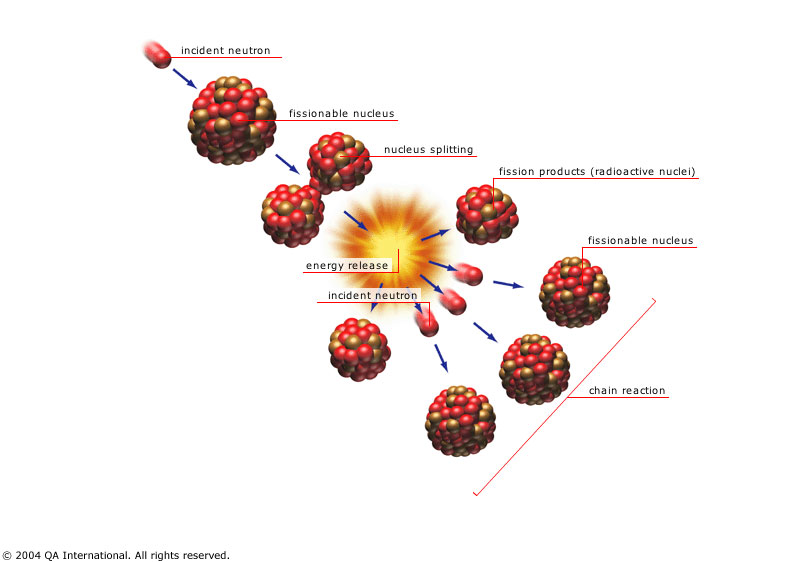 |
|---|---|
A neutron triggers the fission of Uranium-235 and plutonium-239,
releasing energy and more neutrons. The released neutrons trigger further
fission.
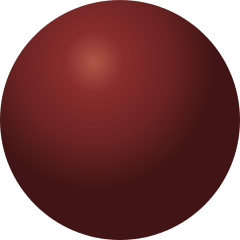 |
 |
 |
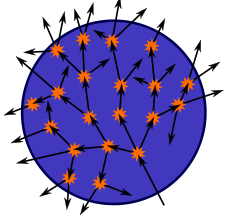 |
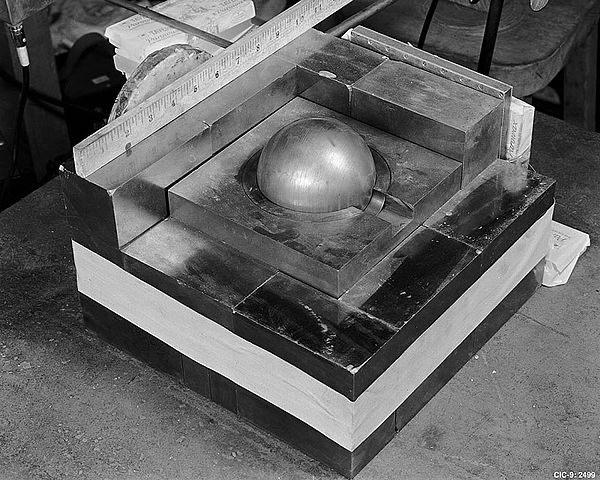 |
|---|---|---|---|---|
|
|
|
|
|
|
A fission of uranium-235 releases on average 1.86 neutrons, some of which trigger fission in nearby nuclei and some of which escape without triggering fission. If a sphere of uranium-235 is small then most of the neutrons escape before triggering fission and the sphere doesn't blow up. If the sphere is large then most of the neutrons trigger more fission, a chain reaction occurs and the sphere blows up. The threshold for a chain reaction is the "critical mass".
The nuclei that are capable of undergoing a chain reaction are:
Protons Neutrons Critical Halflife Neutrons per
mass (kg) (106 yr) fission
Uranium-233 92 141 16 .160 2.48
Uranium-235 92 143 52 700 1.86
Plutonium-239 94 145 10 .024 2.16
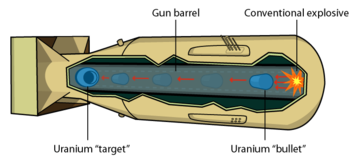 |
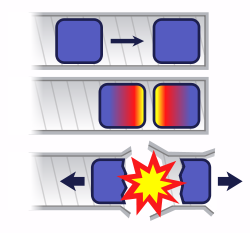 |
|---|---|
If you bring two pieces of uranium-235 together too slowly, a chain reaction begins in the near side of each piece, generates heat, and blows the two pieces apart before they can come completely together. Only a small amount of uranium undergoes fission and this is referred to as a "fizzle". Using gunpowder and a cannon is fast enough to properly detonate uranium and this is technologically easy to do.
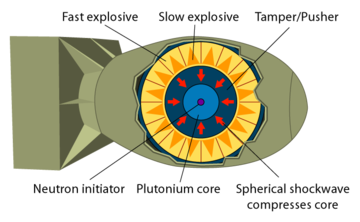 |
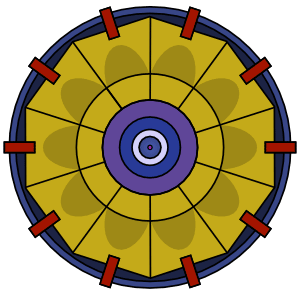 |
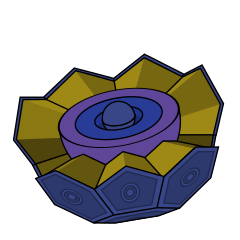 |
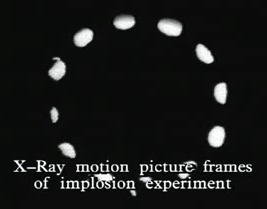 |
|---|---|---|---|
Plutonium is more difficult to detonate than uranium. Simply bringing two pieces together, no matter how fast, results in a fizzle. To detonate plutonium you have to shape it as a sphere and implode it, which is technologically difficult.
In World War 2 the U.S. produced enough uranium for 1 bomb and enough plutonium for 2 bombs. One of the plutonium bombs was tested in the "Trinity" test before being used in the war, and the second bomb was dropped on Nagasaki. The uranium bomb was dropped on Hiroshima without previously being tested.
When Hans Bethe, a physicist on the Manhattan project, was asked why they didn't test the uranium bomb he replied "Because we were perfectly sure it would work".
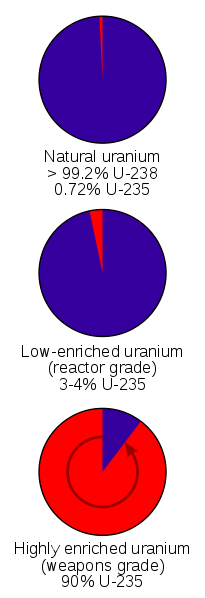 |
 |
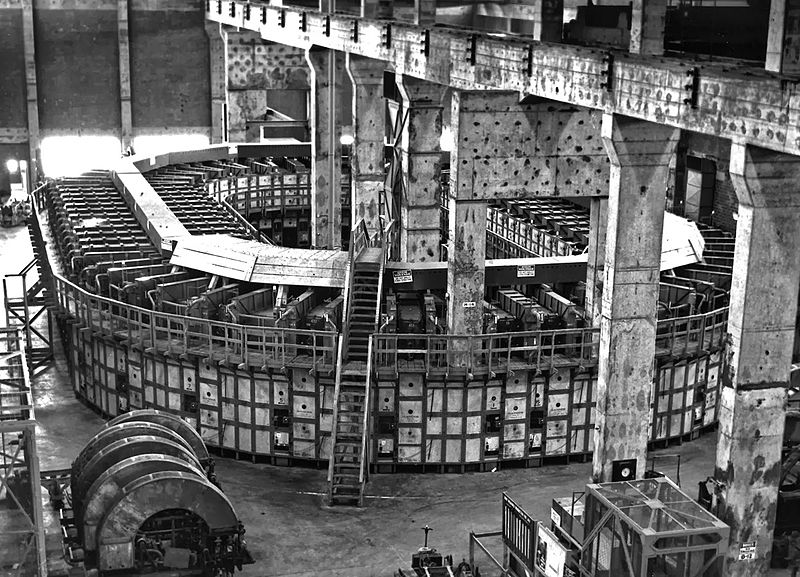 |
|---|---|---|
Natural Uranium is .72% Uranium-235 and 99.3% Uranium-238. Only Uranium-235 undergoes a chain reaction and so it has to be separated from the Uranium-238. Several methods exist for doing this. In World War 2 the isotopes were separated magnetically with calutrons. Gas diffusion and centrifuges can also be used.
 |
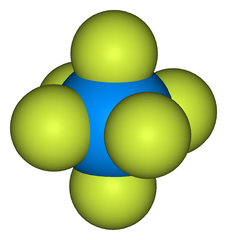 |
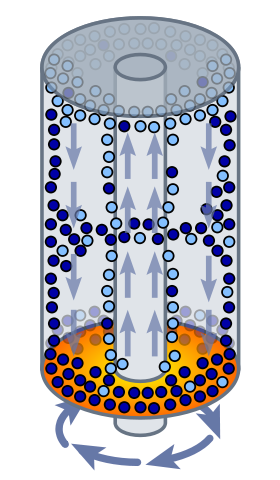 |
 |
|---|---|---|---|
Uranium is converted to gas form by forming uranium hexafluoride (HF6). HF6 is a gas above 64 Celsius. In a centrifuge, the lighter uranium-235 concentrates at the center and the heavier uranium-238 concentrates at the edge.
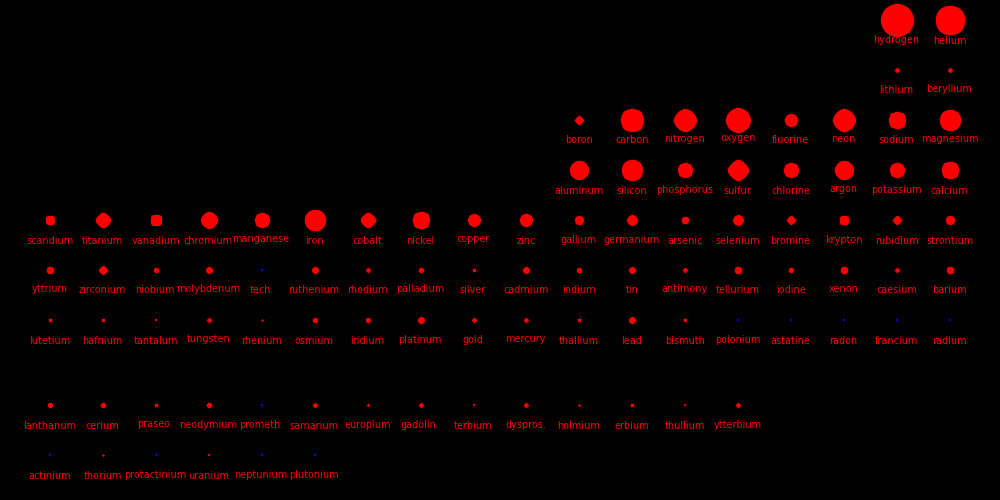 |
|---|
Blue elements are unstable with a half life much less than the age of the solar system and don't exist in nature.
The only elements heavier than Bismuth that can be found on the Earth are Thorium and Uranium, and these are the only elements that can be tapped for fission energy.
Natural thorium is 100% Thorium-232
Natural uranium is .7% Uranium-235 and the rest is Uranium-238.
Plutonium has a short half life and doesn't exist in nature. It can be created by subjecting uranium-238 to neutrons in a nuclear reactor. Fissionable uranium-233 can be created from thorium-232.
Uranium-238 + Neutron → Plutonium-239 Thorium-232 + Neutron → Uranium-233 Detail: Uranium-238 + Neutron → Uranium-239 Uranium-239 → Neptunium-239 + Electron + Antineutrino Halflife = 23 minutes Neptunium-239 → Plutonium-239 + Electron + Antineutrino Halflife = 2.4 days Thorium-232 + Neutron → Thorium-233 Thorium-233 → Protactinium-233 + Electron + Antineutrino Halflife = 22 minutes Protactinium-233 → Uranium-233 + Electron + Antineutrino Halflife = 27.0 days
 |
|
|---|---|
Fusion bombs use the reactions:
Neutron + Lithium6 → Tritium + Helium4 + 4.874 MeV Deuterium + Tritium → Helium4 + Neutron + 17.56 MeVLeaving out the neutron catalyst, this is
Deuterium + Lithium6 → Helium4 + Helium4 + 22.43 MeV
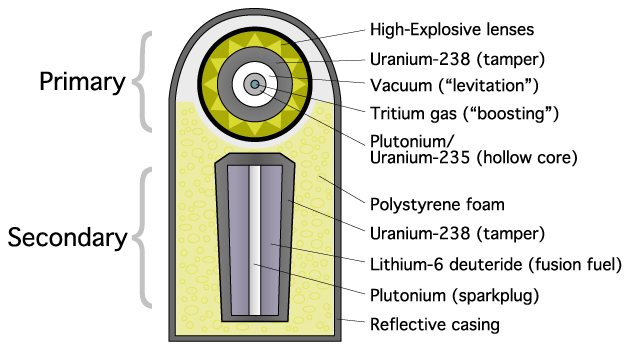 |
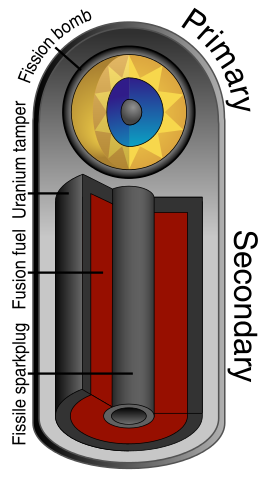 |
|---|---|
Fusion of deuterium and lithium requires high temperature and pressure, which is achieved by compressing the fuel. This is done by detonating a fission bomb and using the generated X-rays to compress the fusion fuel. X-rays strike the outer layer and expel atoms, and the recoil compresses the fuel. This is called "ablation" and the design was developed by Teller and Ulam.
X-ray Plasma Ablation
pressure pressure pressure
TPa TPa TPa
Ivy Mike 7.3 35 530
W-80 140 750 6400
-LLNL.jpg) |
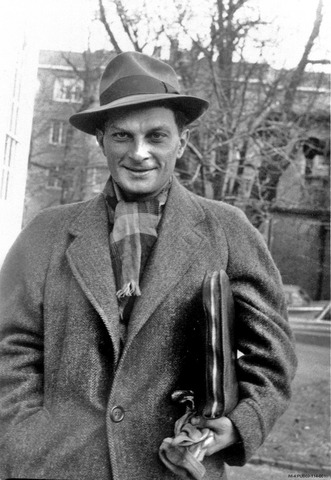 |
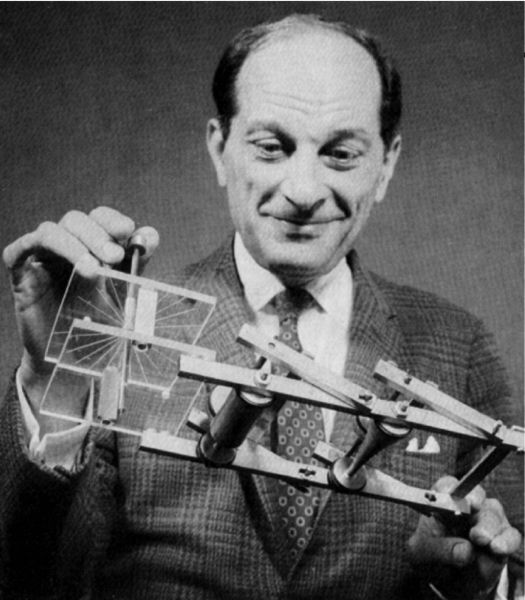 |
|---|---|---|
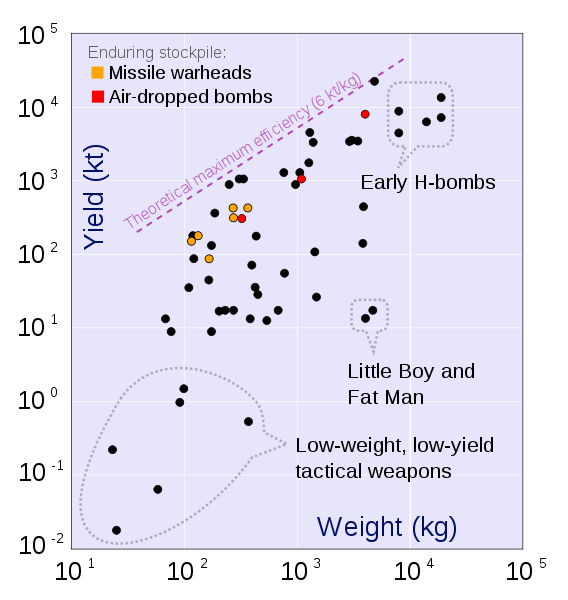 |
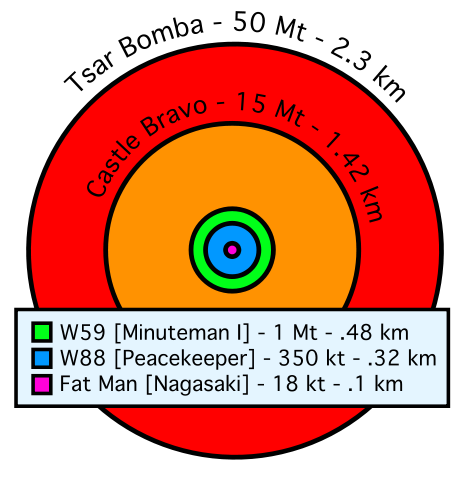 |
|---|---|
The practical limit for the energy/mass of a fusion bomb = 25 TJoules/kg or .0062 Mtons of TNT per kg.
1 ton of TNT = 4⋅109 Joules 1 ton of gasoline = 4⋅1010 Joules Massive Ordnance Air Blast bomb = .000011 MTons TNT (Largest U.S. conventional bomb) Trinity plutonium-239 test = .020 MTons TNT Hiroshima uranium-235 fission bomb = .015 MTons TNT "Little Boy". 60 kg Uranium-235 Nagasaki plutonium-239 fission bomb = .021 MTons TNT "Fat Man". 6 kg Plutonium-239 Ivy King fission bomb = .5 MTons TNT Largest pure fission bomb B83 fusion bomb = 1.2 MTons TNT Largest bomb in active service Castle Bravo fusion bomb = 15 MTons TNT Largest U.S. test B41 fusion bomb = 25 MTons TNT Largest U.S. bomb created Tsar Bomba = 50 MTons TNT Largest USSR test
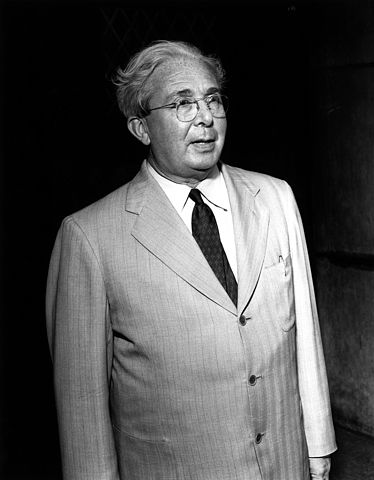 |
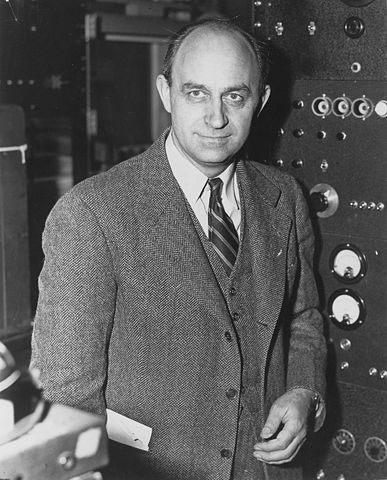 |
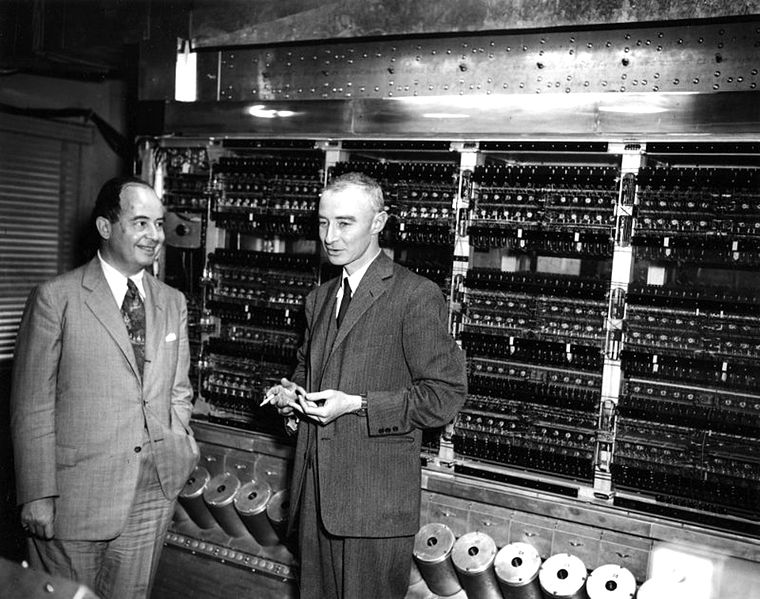 |
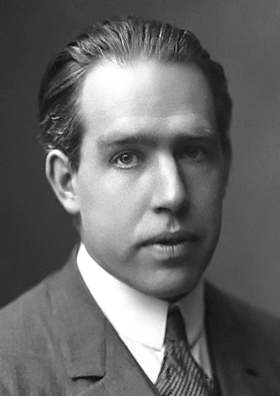 |
|---|---|---|---|
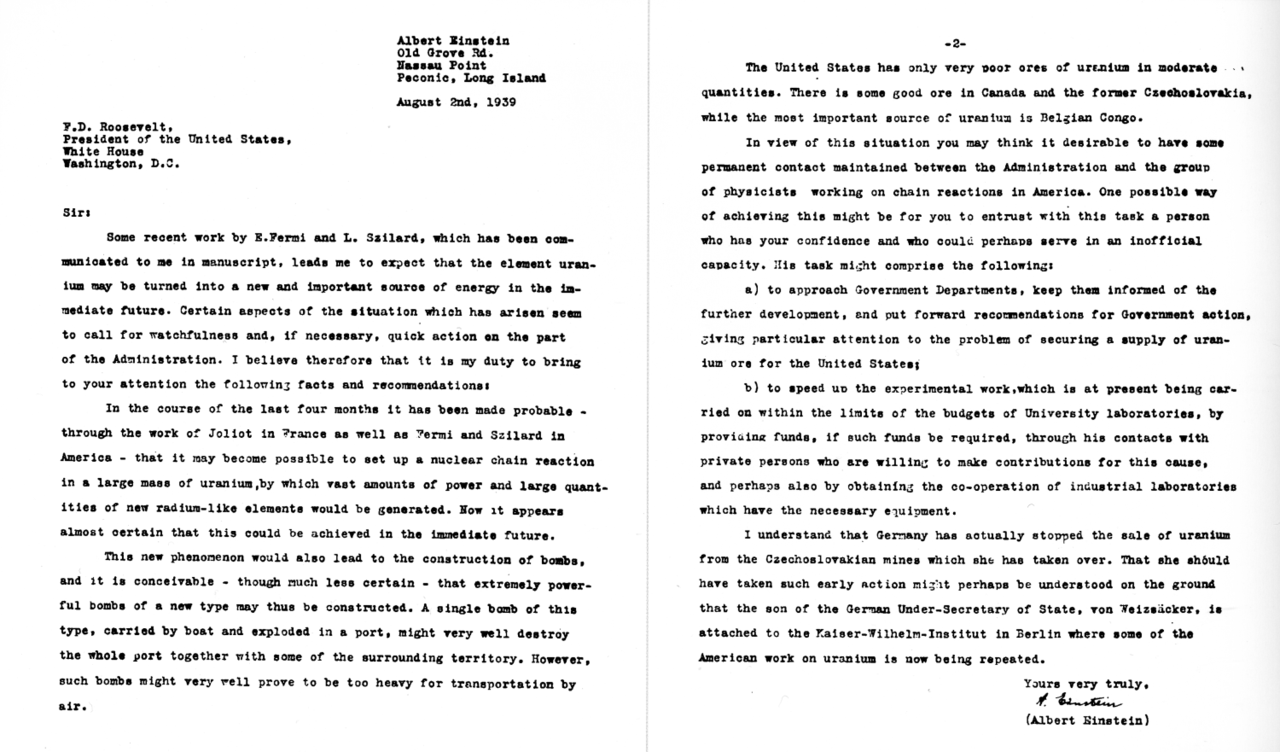 |
|---|
1885 Rontgen discovers X-rays
1899 Rutherford discovers alpha and beta rays
1903 Rutherford discovers gamma rays
1905 Einstein discovers that E=mc2. Matter is equivalent to energy
1909 Nucleus discovered by the Rutherford scattering experiment
1932 Neutron discovered
1933 Nuclear fission chain reaction envisioned by Szilard
1934 Fermi bombards uranium with neutrons and creates Plutonium
1938 Dec19 Hahn and Strassmann discover uranium fission
1939 Jan 6 Hahn and Strassmann publish uranium fission
1939 Jan25 Fermi begins conducting nuclear fission experiments at Columbia University
1939 Jan26 Bohr and Fermi report on uranium fission at the Washington Conference
on theoretical physics
1939 Szilard and Zinn discover that bombarding uranium with neutrons produces
new neutrons.
1939 Jul 4 Szilard, Wigner, and Einstein discuss nuclear fission
1939 Aug 2 Szilard, Teller, and Einstein discuss nuclear fission. Szilard drafts
the the "Einstein letter" that is later delivered to President Roosevelt
1939 Oct11 Alexander Sachs briefs President Roosevelt on Einstein's letter.
1939 Oct12 Alexander Sachs meets again with President Roosevelt and this time
Roosevelt gives the order to commence the development of a nuclear bomb.
1942 Dec 2 Fermi and Szilard achieve the first self-sustaining nuclear fission
reactor at the University of Chicago
1942 Aug Manhattan project commences
1942-1945 German nuclear bomb project goes nowhere
1945 Jul16 Trinity test of a plutonium bomb yields a 20 kTon TNT equivalent explosion
1945 Aug 6 A uranium bomb is deployed at Hiroshima, yielding 15 kTons TNT equivalent
1945 Aug 9 A plutonium bomb is deployed at Nagasaki, yielding 21 kTons TNT equivalent
Hans Bethe, a physicist on the Manhattan Project, was asked why the uranium type
bomb was not tested before deployment and he replied "Because we were perfectly sure
it would work".
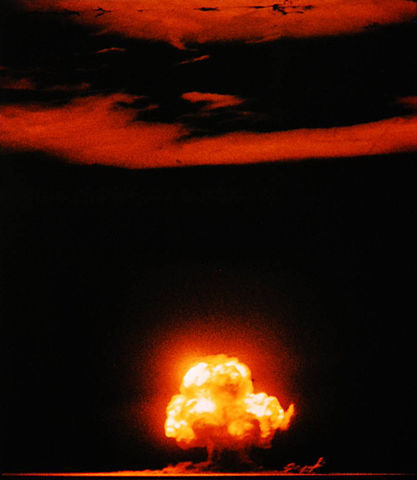 |
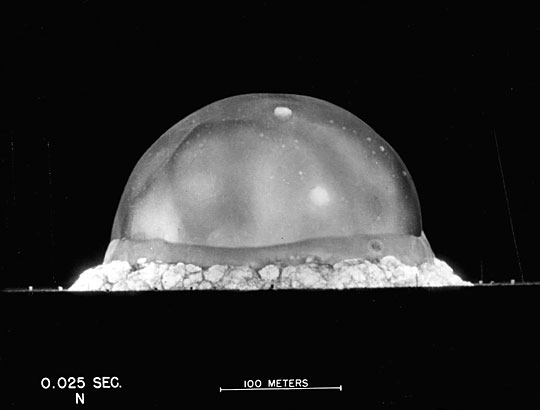 |
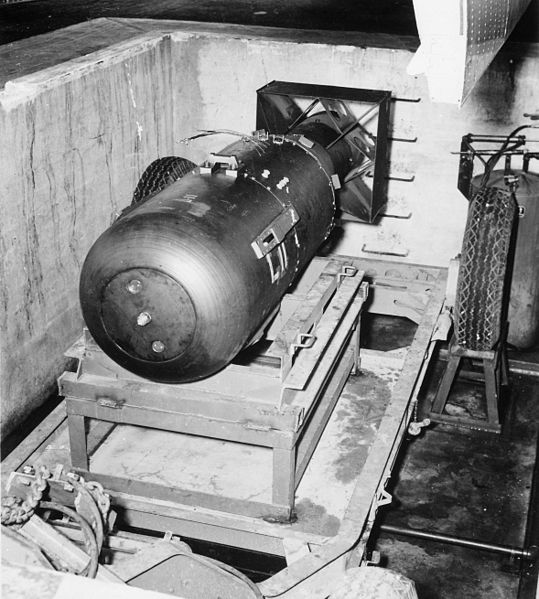 |
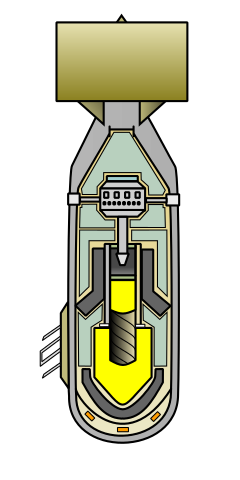 |
 |
|---|---|---|---|---|
.jpg) |
 |
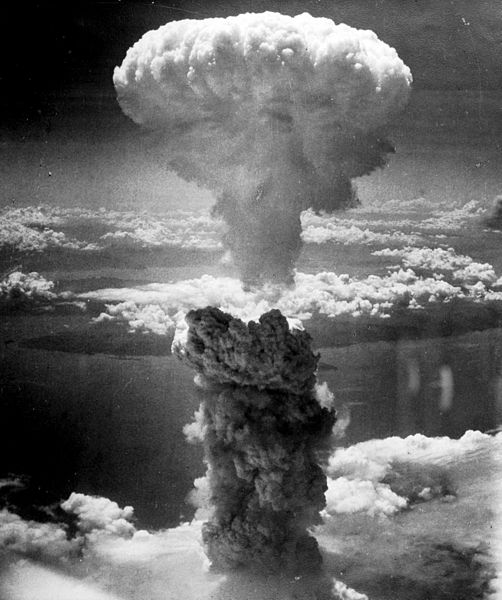 |
|---|---|---|
All of the radioactive fission products decay by beta decay.
If the neutron cross section is 8 barnes or higher then the nucleus can potentially be transmuted into a nonradioactive nucleus.
Strontium-90 is ideal for Radioisotope Thermoelectric Generators (RTGs).
The most troublesome fission products are the ones that can't be transmuted. Chief among these are Caesium-137, Zirconium-93, Niobium-94, Strontium-90, Zirconium-91, and Palladium-107.
Curtis LeMay: Flying fighters is fun. Flying bombers is important.
An wing generates lift at the cost of drag. Lift exceeds drag.
The lift-to-drag coefficient Qw is proportional to wing length divided by wing width.
Wing width varies along the length of the wing. We define an effective width as
"Area" is the total for both wings, and "Length" is for one wing.
Aspect ratio is Length/Width.
Changing wing angle changes lift and drag. There is an optimum angle that maximizes
the lift-to-drag coefficient.
If the angle is larger than the optimal angle, you gain lift at the expense of drag.
If you make the angle of attack too large, lift ceases and the plane stalls.
The air drag force is
A glider is unpowered. The more efficient the glider, the
smaller the glide angle. The minimum glide angle is determined by the
wing lift/drag coefficient.
For the mass scalings, we assume that wing area scales as M2/3.
A wingtip creates a vortex as it moves. Wingtips are often equipped with a
vertical element to damp the vortex. The vertical element increases the effective
wing length and improves the lift-to-drag coefficient.
coefficient.
Birds fly in a "V" formation to use
the updraft from their neighbor's wingtip vortices.
An aircraft moving at Mach 2 and turning with a radius of 1.2 km has a g force of
7 g's.
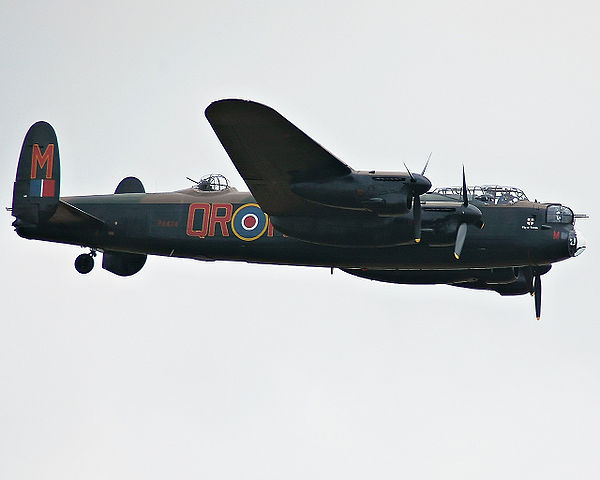
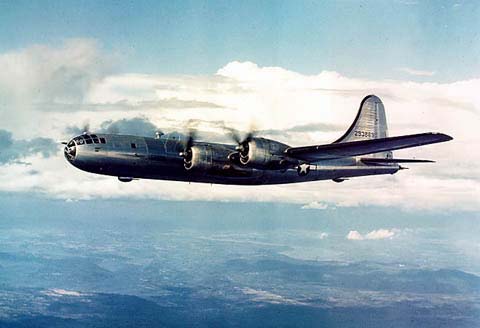

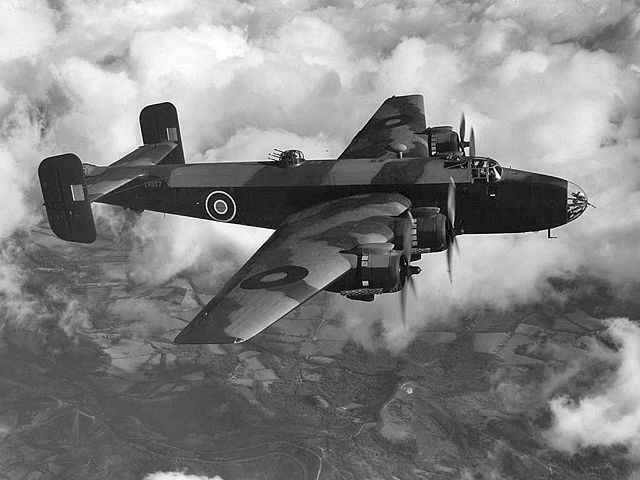
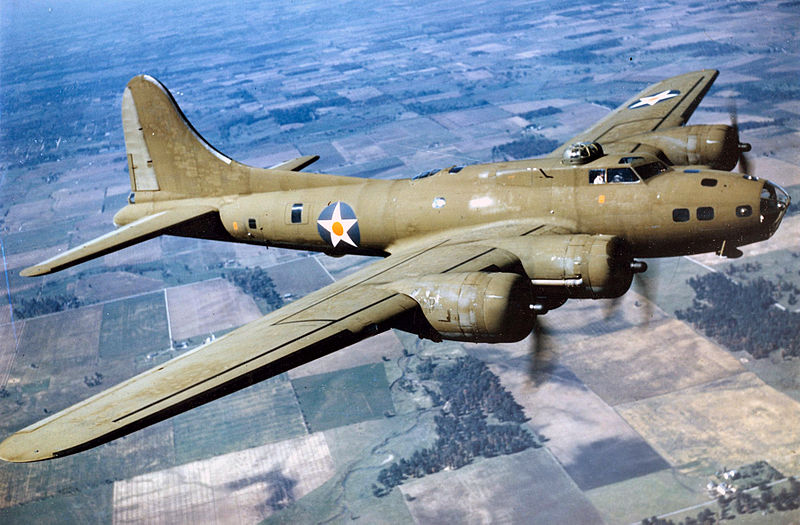
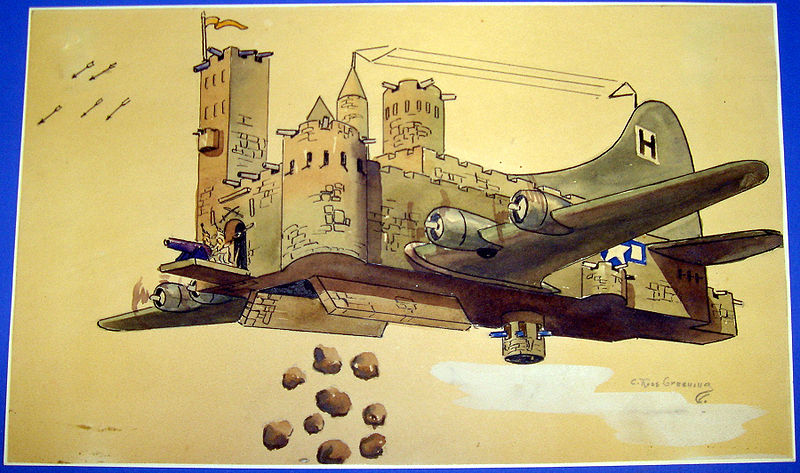
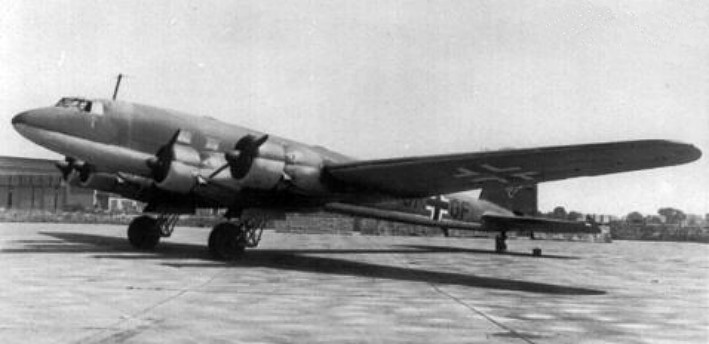
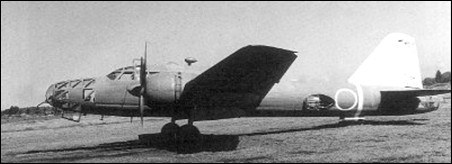
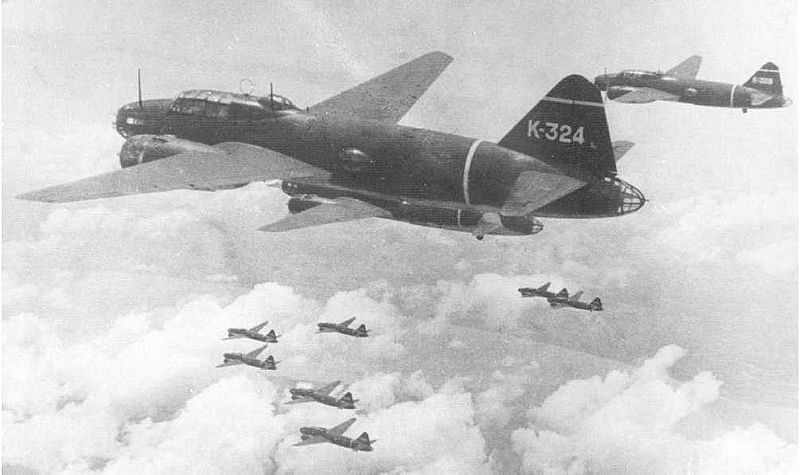
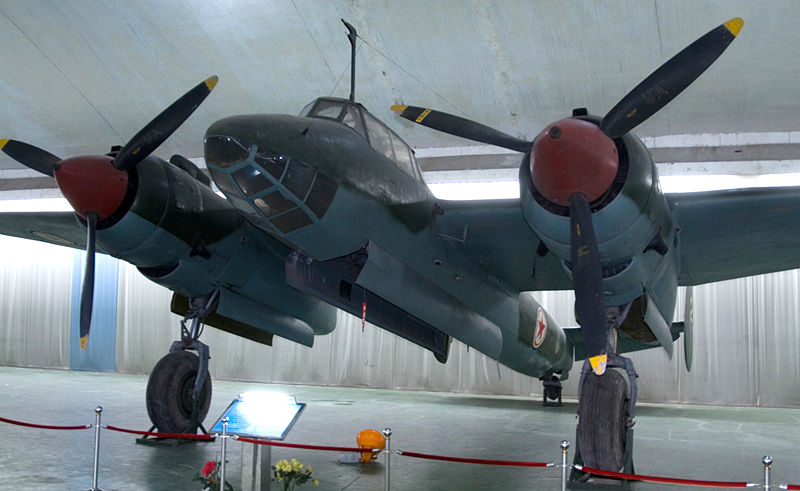
Max Mass Max Bombs Max Engine Range # Year Bombs * #
speed mass alt Built
kph ton ton ton km kWatt km MTon
UK Avro Lancaster 454 16.6 32.7 10.0 6.5 4x 954 4073 7377 1942 74
USA B-17 Flying Fortress 462 16.4 29.7 3.6 10.5 4x 895 3219 12731 1938 46
USA B-29 Superfortress 574 33.8 60.6 9.0 9.7 4x1640 5230 3970 1944 36
UK Handley Page Halifax 454 17.7 24.7 5.9 7.3 4x1205 3000 6176 1940 36.4
Soviet Petlyakov Pe-2 580 5.9 8.9 1.6 8.8 2x 903 1160 11427 1941 18
UK Short Stirling 454 21.3 31.8 6.4 5.0 4x1025 3750 2371 1939 15.2
Soviet Tupolev Tu-2 528 7.6 11.8 3.8 9.0 2x1380 2020 2257 1942 8.6
Germany Heinkel He 177 565 16.8 32.0 7.2 8.0 2x2133 1540 1169 1942 8.4
Germany Fokke-Wulf Condor 360 17.0 24.5 5.4 6.0 4x 895 3560 276 1937 1.5
Japan Mitsubishi Ki-67 537 8.6 13.8 1.6 9.5 2x1417 3800 767 1942 1.2
Japan Yokosuka P1Y Ginga 547 7.3 13.5 1.0 9.4 2x1361 5370 1102 1944 1.1
Japan Mitsubishi G4M 428 6.7 12.9 1.0 8.5 2x1141 2852 2435 1941 2.4
UK Total 126
USA Total 82
Soviet Total 27
Germany Total 10
Japan Total 5
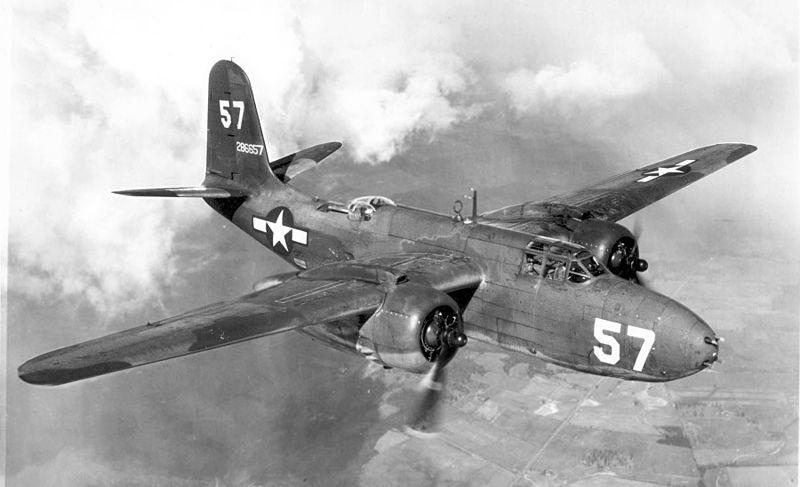
-531.jpeg)

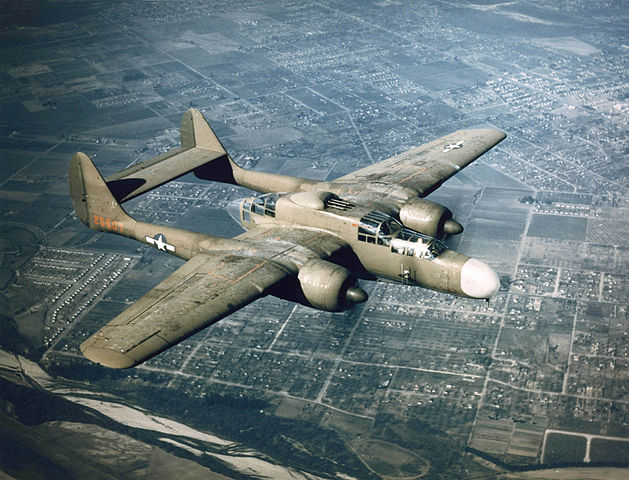
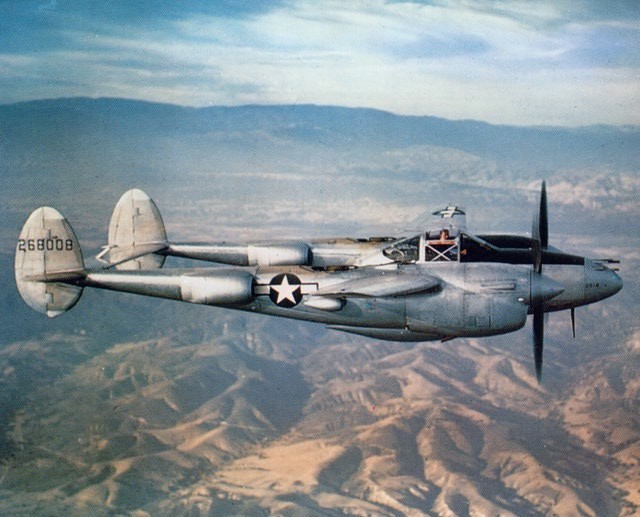
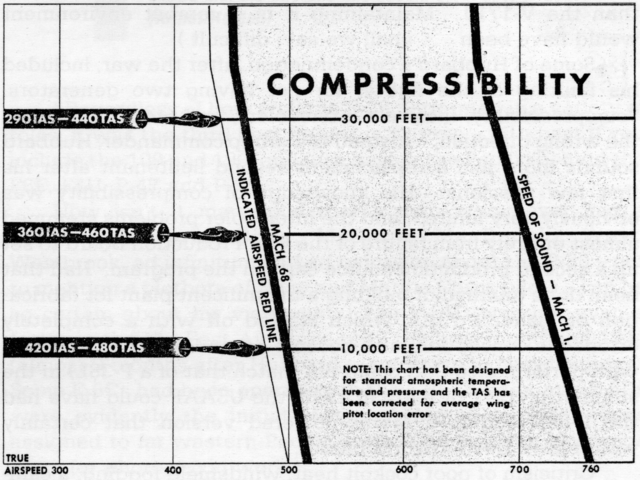

.jpg)
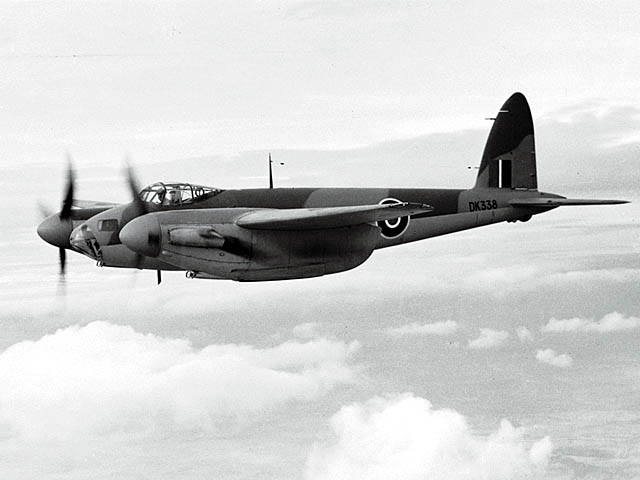
.jpg)
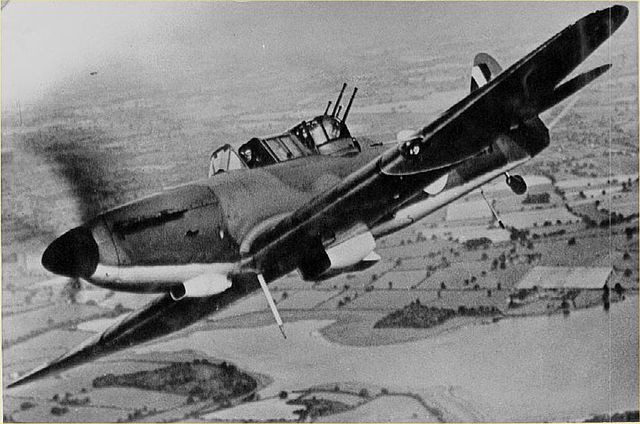

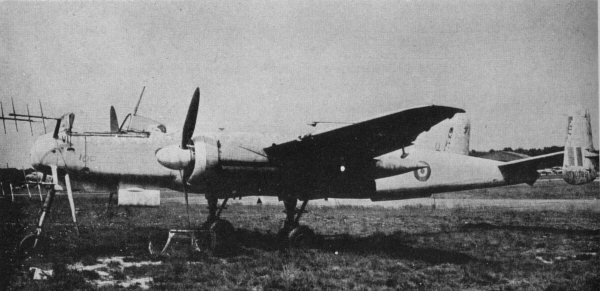
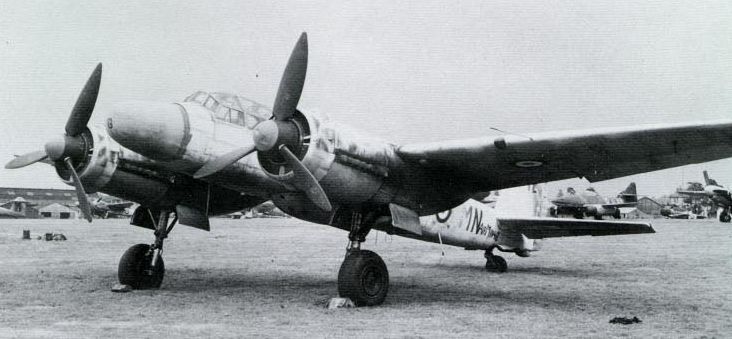
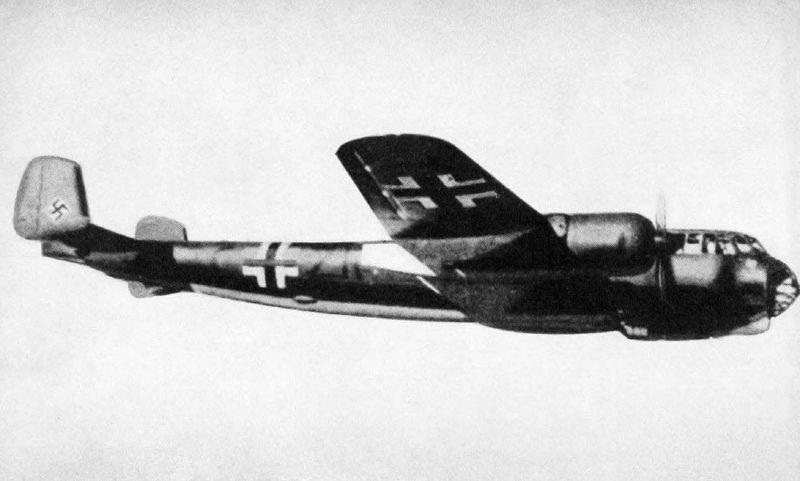
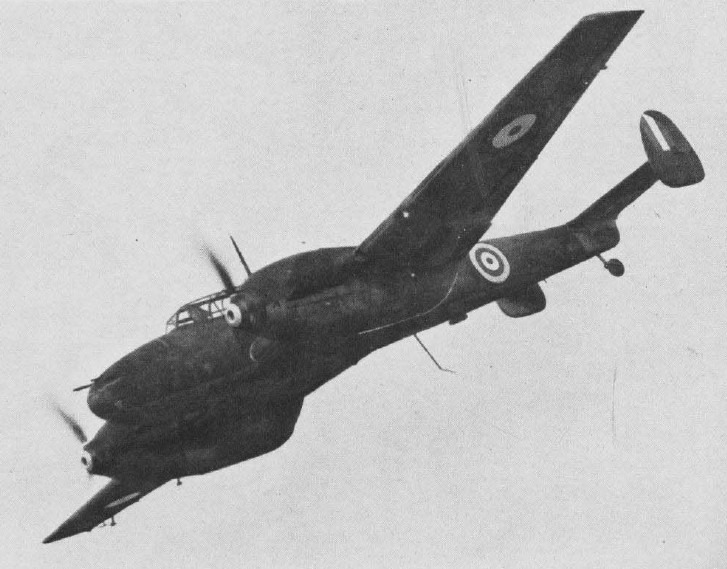
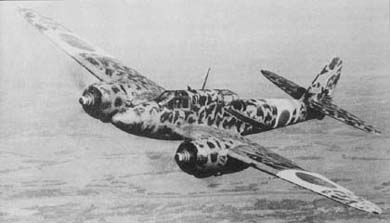


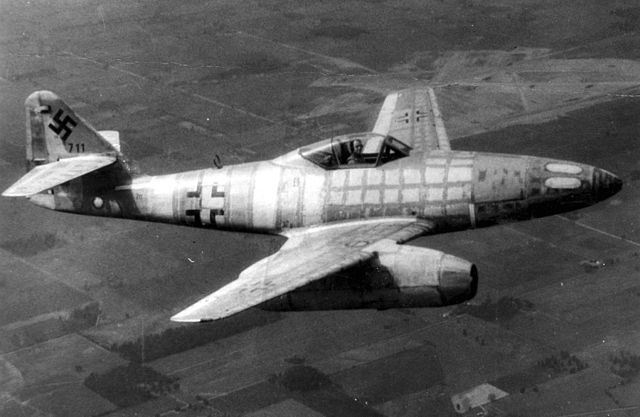
.jpg)
Max Climb Mass Max Bombs Max Engine Range # Year
speed mass alt Built
kph m/s ton ton ton km kWatt km
USA P51 Black Widow 589 12.9 10.6 16.2 2.9 10.6 2x1680 982 706 1944
USA A-20 Havoc 546 10.2 6.8 12.3 .9 7.2 2x1200 1690 7478 1941
USA F7F Tigercat 740 23 7.4 11.7 .9 12.3 2x1566 1900 364 1944
USA P-38 Lightning 667 24.1 5.8 9.8 2.3 13.0 2x1193 10037 1941
UK Fairey Firefly 509 8.8 4.4 6.4 .9 8.5 1x1290 2090 1702 1943
UK Mosquito 668 14.5 6.5 11.0 1.8 11.0 2x1103 2400 7781 1941
UK Beaufighter 515 8.2 7.1 11.5 .3 5.8 2x1200 2816 5928 1940
UK Fairie Fulmar 438 3.2 4.6 .1 8.3 1x 970 1255 600 1940
UK Defiant 489 9.0 2.8 3.9 0 9.2 1x 768 749 1064 1939
Japan Dragon Slayer 540 11.7 4.0 5.5 0 10.0 2x 783 1701 1941 Ki-45
Japan Flying Dragon 537 6.9 8.6 13.8 1.6 9.5 2x1417 3800 767 1942 Ki-67
Japan J1N Moonlight 507 8.7 4.5 8.2 0 2x 840 2545 479 1942
Ger. Hornet 624 9.3 6.2 10.8 1.0 10.0 2x1287 2300 1189 1943
Ger. Flying Pencil 557 3.5 9.1 16.7 4.0 7.4 2x1287 2145 1925 1941 Do-217
Ger. Heinkel He-219 616 13.6 0 9.3 2x1324 1540 300 1943
Ger. Junkers Ju-88 360 11.1 12.7 0 5.5 2x1044 1580 15183 1939
Ger. Me-110 595 12.5 7.8 0 11.0 2x1085 900 6170 1937
SU Petlyakov Pe-3 530 12.5 5.9 8.0 .7 9.1 2x 820 1500 360 1941
UK Gloster Meteor 965 35.6 4.8 7.1 .9 13.1 Jet 965 3947 1944
Ger. Me-262 Swallow 900 ~25 3.8 7.1 1.0 11.5 Jet 1050 1430 1944
Ger. Heinkel He-162 840 23.4 1.7 2.8 0 12.0 Jet 975 320 1945
Me-262 Swallow jet = 2x 8.8 kNewtons
Heinkel He-162 jet = 1x 7.8 kNewtons
Gloster Meteor jet = 2x16.0 kNewtons
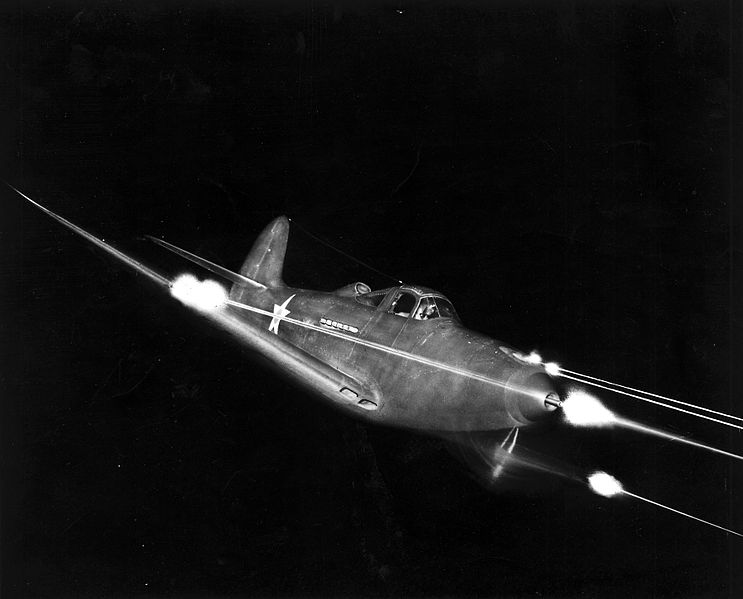

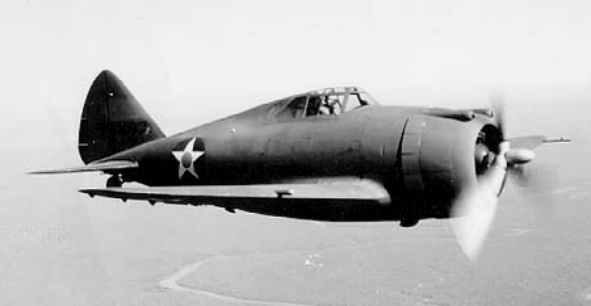
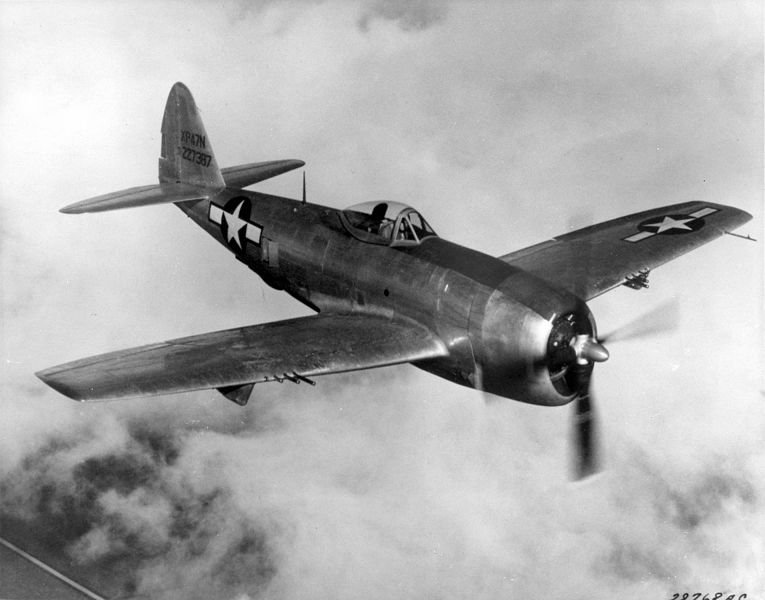
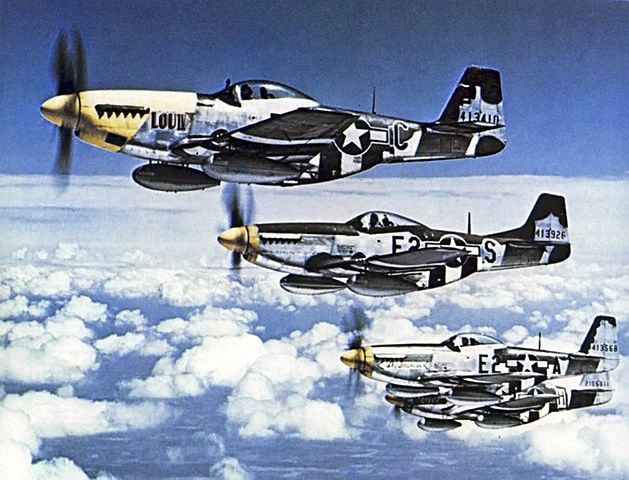
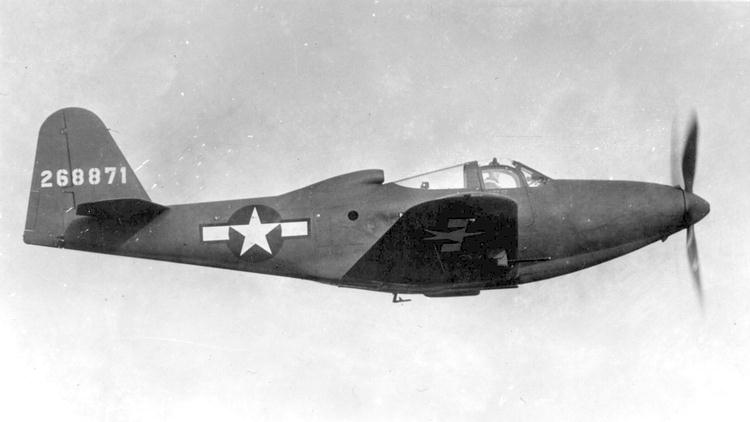
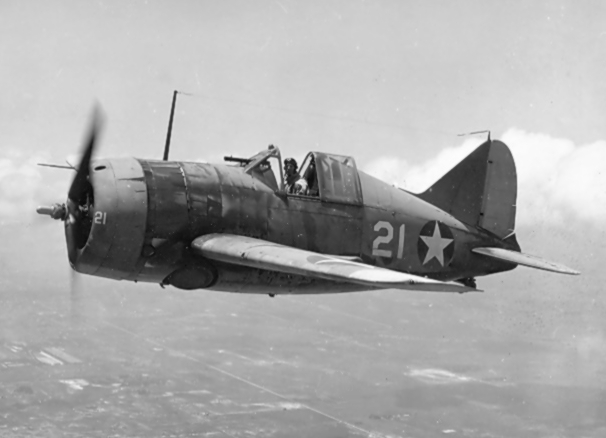

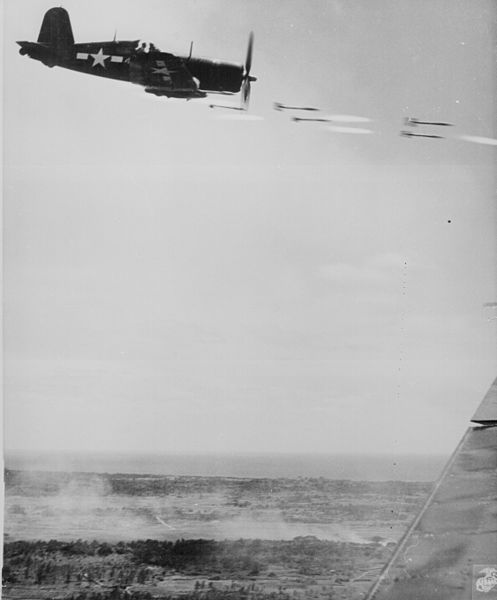
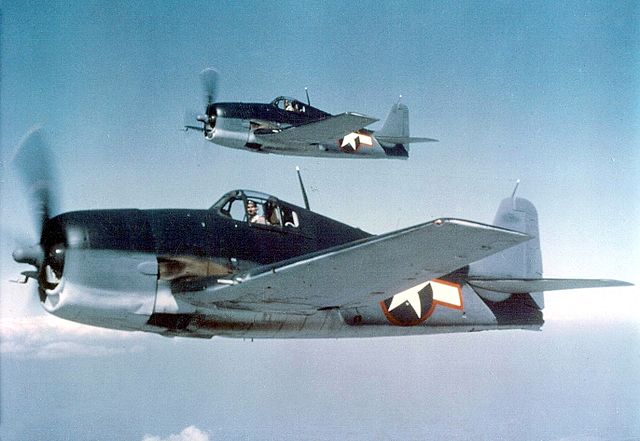
.jpg)
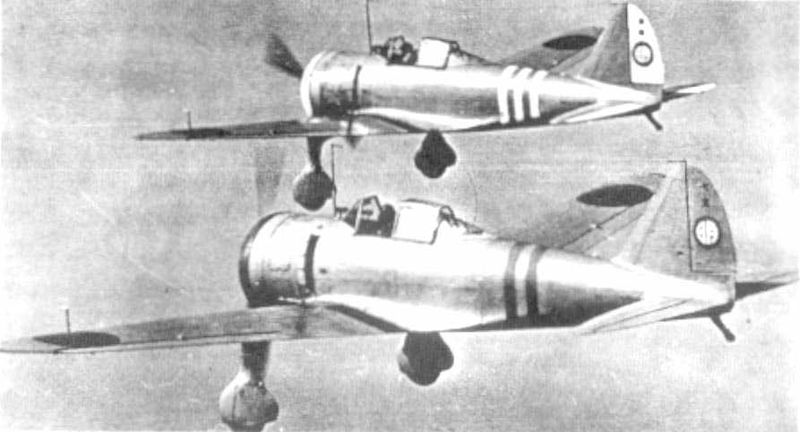
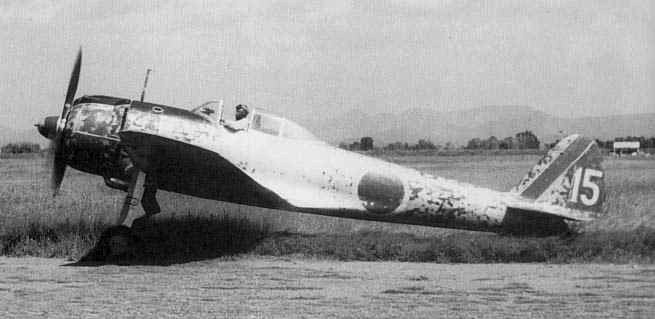
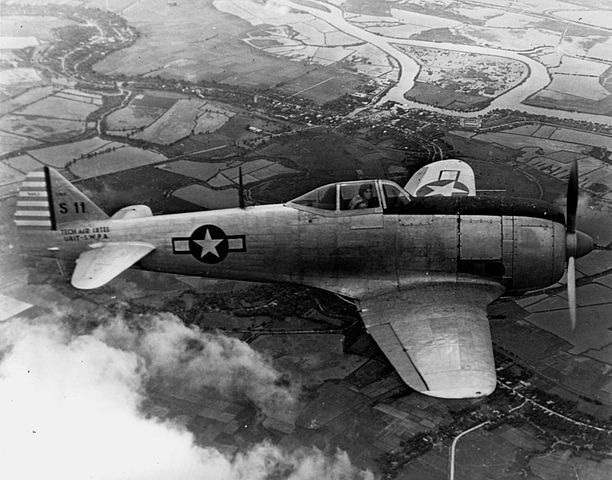
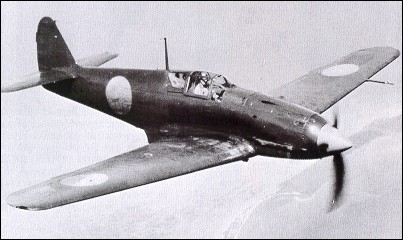
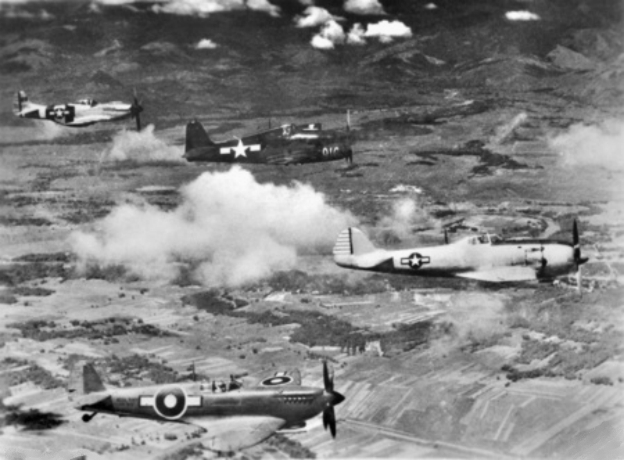
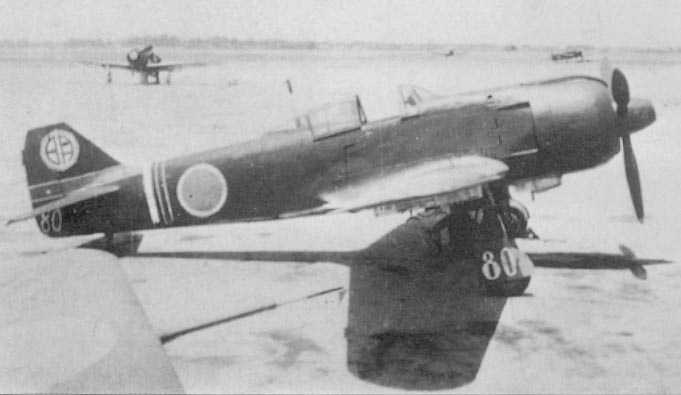
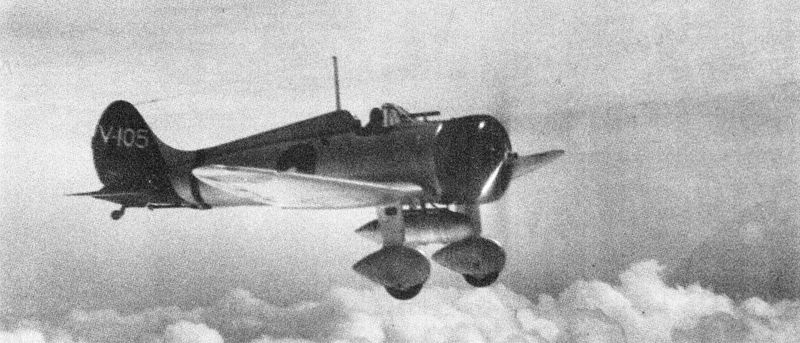

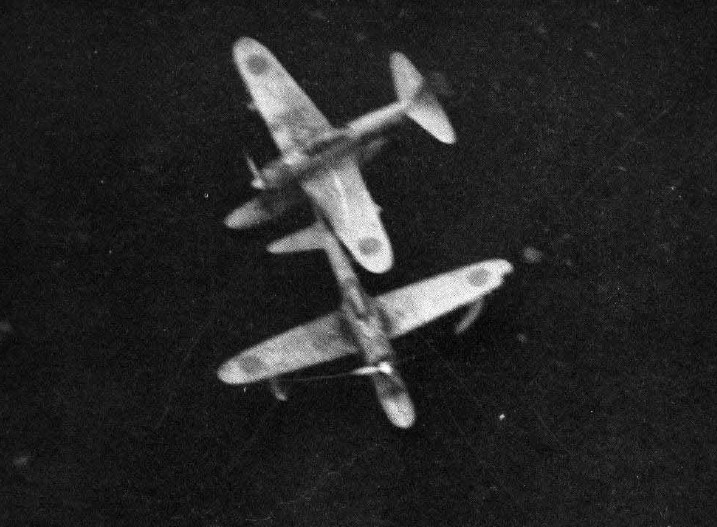
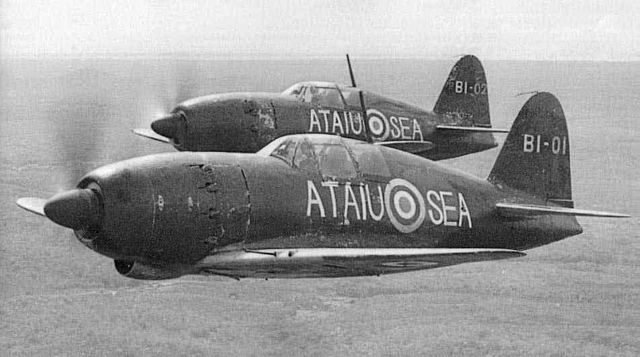

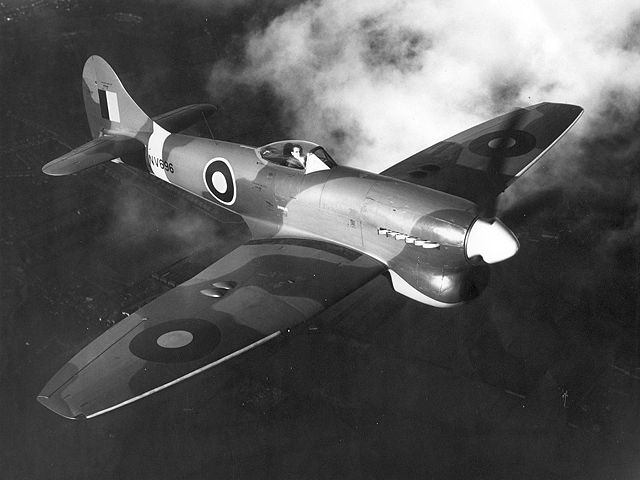
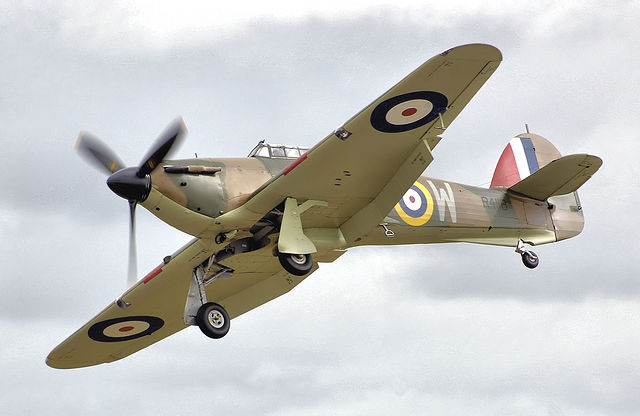
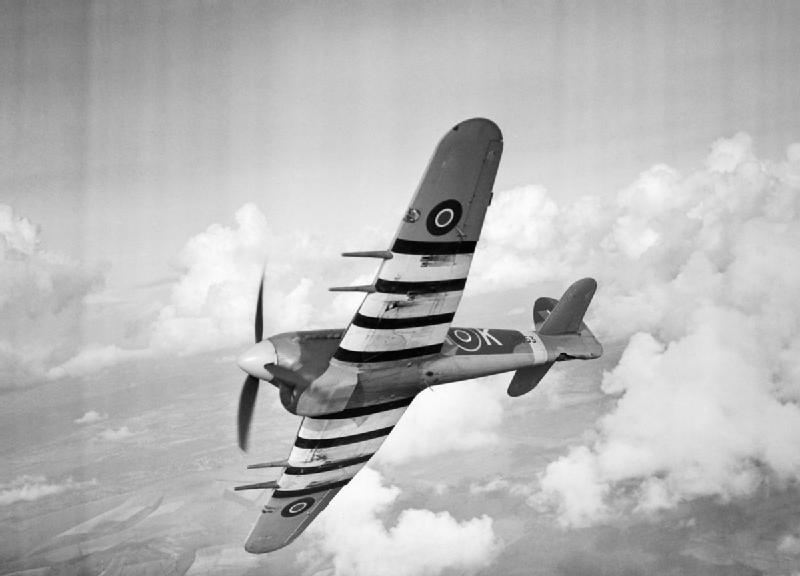
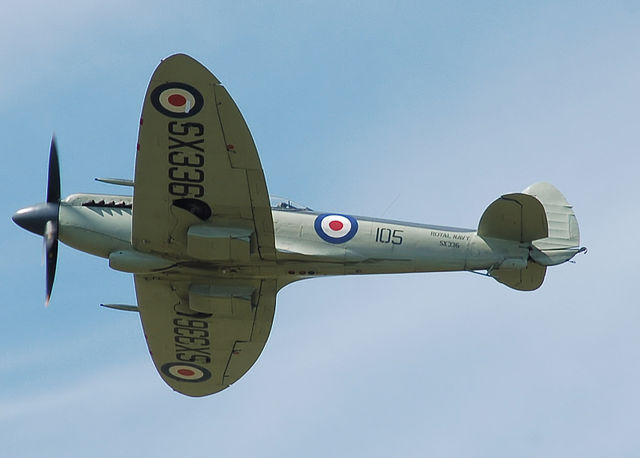
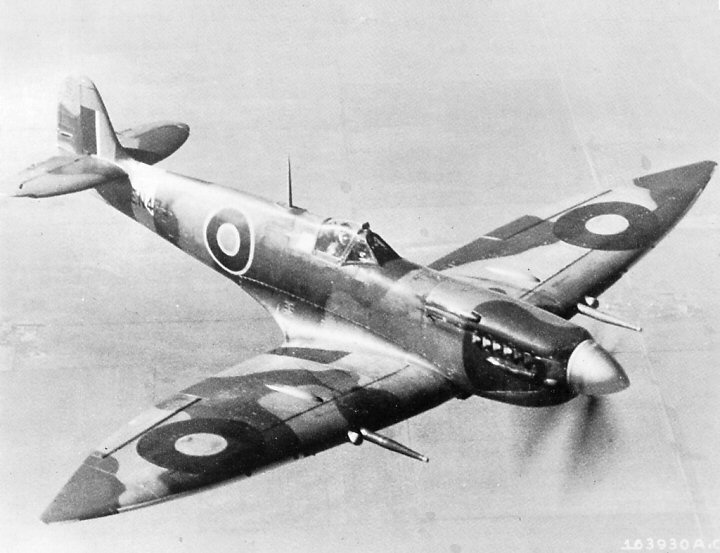
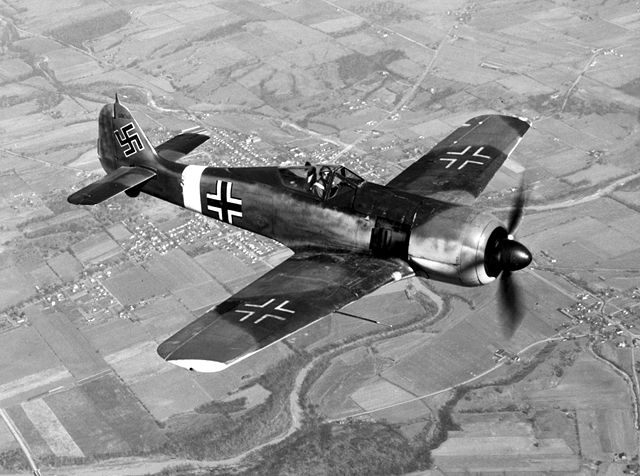
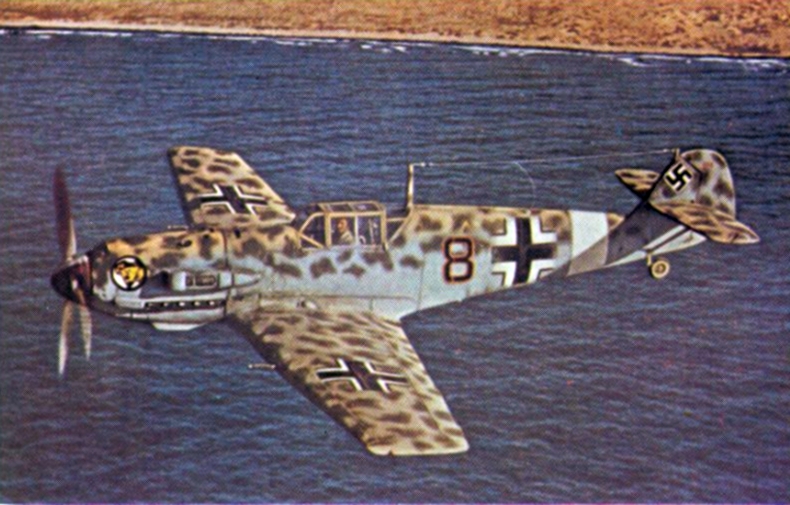
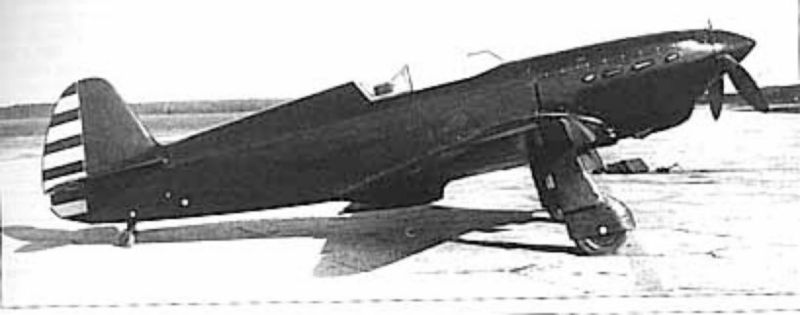

.jpg)
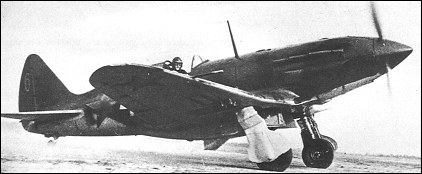
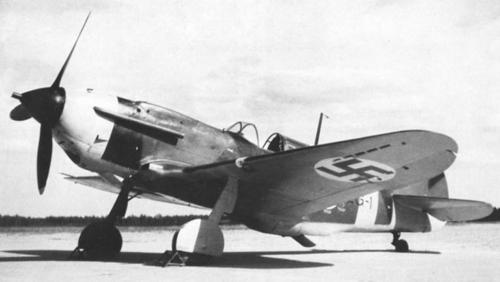

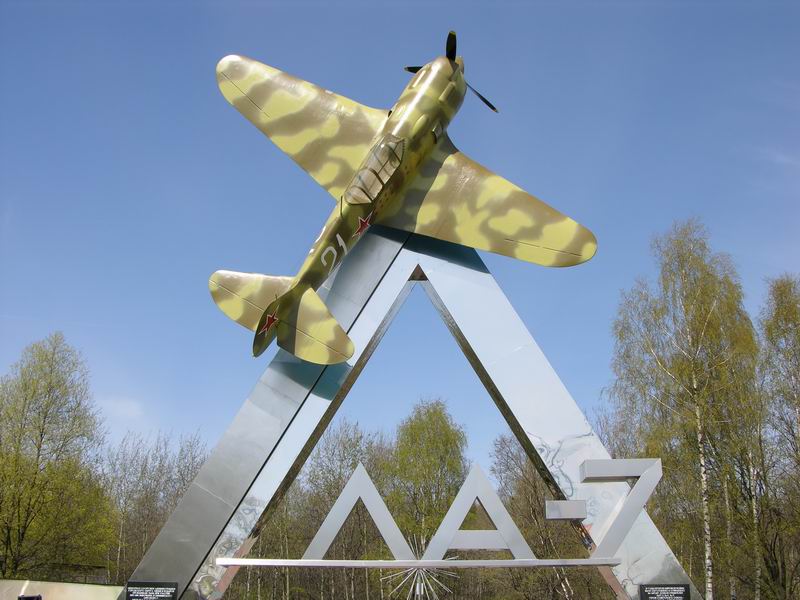
Max Climb Mass Max Bombs Max Engine Range # Year
speed mass alt Built
kph m/s ton ton ton km kWatt km
USA P-39 Airacobra 626 19.3 3.0 3.8 .2 10.7 1x 894 840 9588 1941
USA P-63 Kingcobra 660 12.7 3.1 4.9 .7 13.1 1x1340 725 3303 1943
USA F2A Buffalo 517 12.4 2.1 3.2 0 10.1 1x 890 1553 509 1939
USA P-40 Warhawk 580 11.0 2.8 4.0 .9 8.8 1x 858 1100 13738 1939
USA P-51 Mustang 703 16.3 3.5 5.5 .5 12.8 1x1111 2755 >15000 1942
USA F4F Wildcat 515 11.2 2.7 4.0 0 10.4 1x 900 1337 7885 1940
USA F6F Hellcat 629 17.8 4.2 7.0 1.8 11.4 1x1491 1520 12275 1943
USA F8F Bearcat 730 23.2 3.2 6.1 .5 12.4 1x1678 1778 1265 1945
USA P-43 Lancer 573 13.0 2.7 3.8 0 11.0 1x 895 1046 272 1941
USA P-47 Thunderbolt 713 16.2 4.5 7.9 1.1 13.1 1x1938 1290 15677 1942
USA F4U Corsair 717 22.1 4.2 5.6 1.8 12.6 1x1775 1617 12571 1942
Japan Zero 534 15.7 1.7 2.8 .3 10.0 1x 700 3104 10939 1940
Japan N1K Strong Wind 658 20.3 2.7 4.9 .5 10.8 1x1380 1716 1532 1943
Japan Ki-84 "Gale" 686 18.3 2.7 4.2 .7 11.8 1x1522 2168 3514 1943
Japan Ki-61 580 15.2 2.6 3.5 .5 11.6 1x 864 580 3078 1942
Japan Ki-100 580 13.9 2.5 3.5 0 11.0 1x1120 2200 396 1945
Japan A5M 440 1.2 1.8 0 9.8 1x 585 1200 1094 1936
Japan A6M2 436 12.4 1.9 2.9 .1 10.0 1x 709 1782 327 1942
Japan J2M Thunderbolt 655 23.4 2.8 3.2 .1 11.4 1x1379 560 671 1942
Japan Ki-27 470 15.3 1.1 1.8 .1 12.2 1x 485 627 3368 1937
Japan Ki-43 530 1.9 2.9 .5 11.2 1x 858 1760 5919 1941
Japan Ki-44 605 19.5 2.1 3.0 0 11.2 1x1133 1225 1942
UK Hawker Hurricane 547 14.1 2.6 4.0 .5 11.0 1x 883 965 14583 1943
UK Hawker Tempest 700 23.9 4.2 6.2 .9 11.1 1x1625 1190 1702 1944
UK Hawker Typhoon 663 13.6 4.0 6.0 .9 10.7 1x1685 821 3317 1941
UK Submarine Seafire 578 13.4 2.8 3.5 9.8 1x1182 825 2334 1942
UK Submarine Spitfire 595 13.2 2.3 3.0 0 11.1 1x1096 756 20351 1938
Ger. Fw-190 685 17.0 3.5 4.8 .5 12.0 1x1287 835 >20000 1941
Ger. Bf-109 640 17.0 2.2 3.4 .3 12.0 1x1085 850 34826 1937
SU MiG-3 640 13.0 2.7 3.4 .2 12.0 1x 993 820 3172 1941
SU Yak-1 592 15.4 2.4 2.9 0 10.0 1x 880 700 8700 1940
SU Yak-3 655 18.5 2.1 2.7 0 10.7 1x 970 650 4848 1944
SU Yak-7 571 12.0 2.4 2.9 0 9.5 1x 780 643 6399 1942
SU Yak-9 672 16.7 2.5 3.2 0 10.6 1x1120 675 16769 1942
SU LaGG-3 575 14.9 2.2 3.2 .2 9.7 1x 924 1000 6528 1941
SU La-5 648 16.7 2.6 3.4 .2 11.0 1x1385 765 9920 1942
SU La-7 661 15.7 3.3 .2 10.4 1x1230 665 5753 1944
SU Polykarpov I-16 525 14.7 1.5 2.1 .5 14.7 1x 820 700 8644 1934


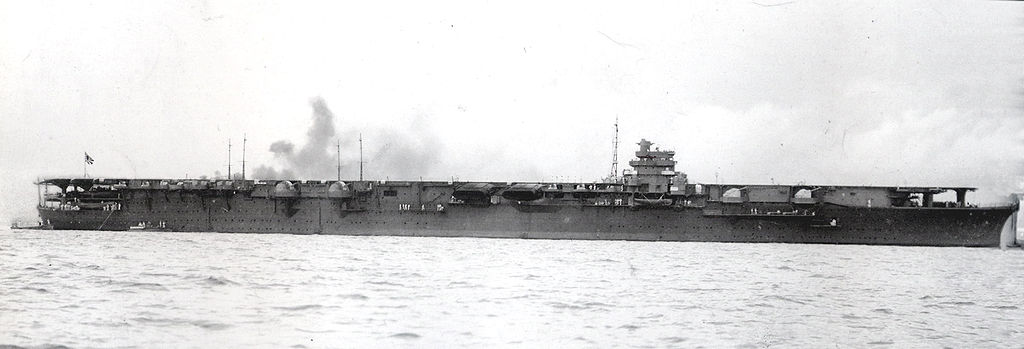
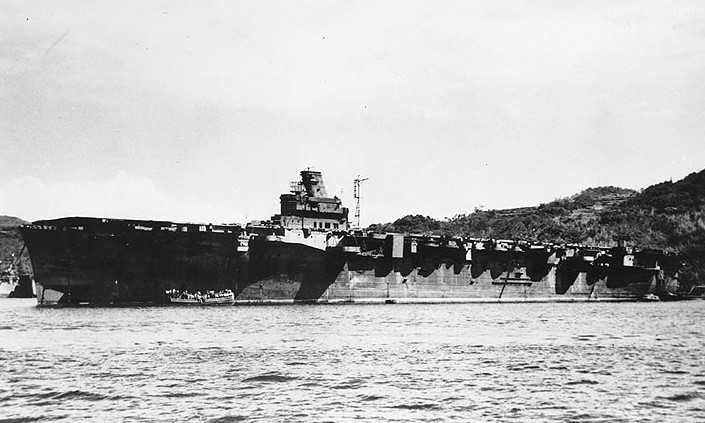
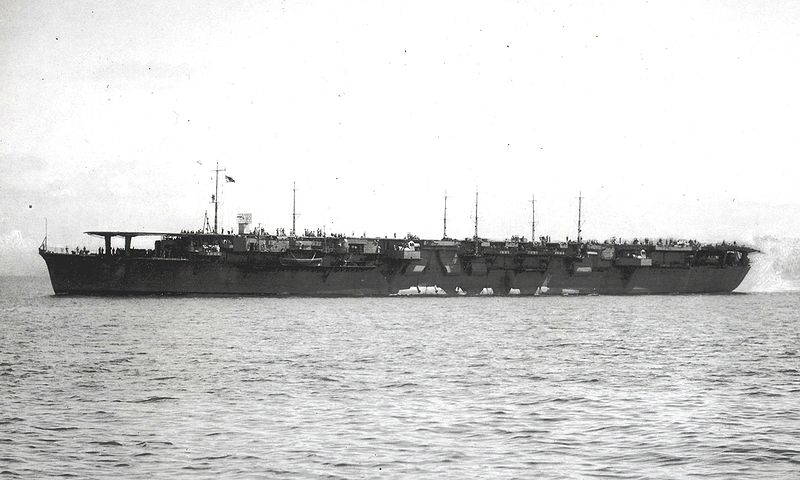
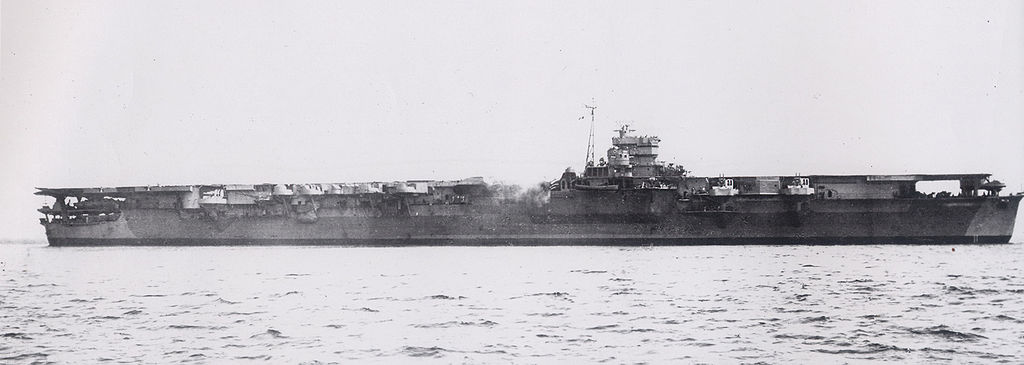

Class Speed Power Length Displace Planes # Year
kph MWatt m kton built
USA Essex 60.6 110 263 47 100 24 1942
USA Independence 58 75 190 11 33 9 1942
Japan Shokaku 63.9 120 257.5 32.1 72 2 1941
Japan Hiyo 47.2 42 219.3 24.2 53 3 1944
Japan Unryu 63 113 227.4 17.8 65 3 1944
Japan Chitose 53.5 42.4 192.5 15.5 30 2 1944
Japan Zuiho 52 39 205.5 11.4 30 2 1940
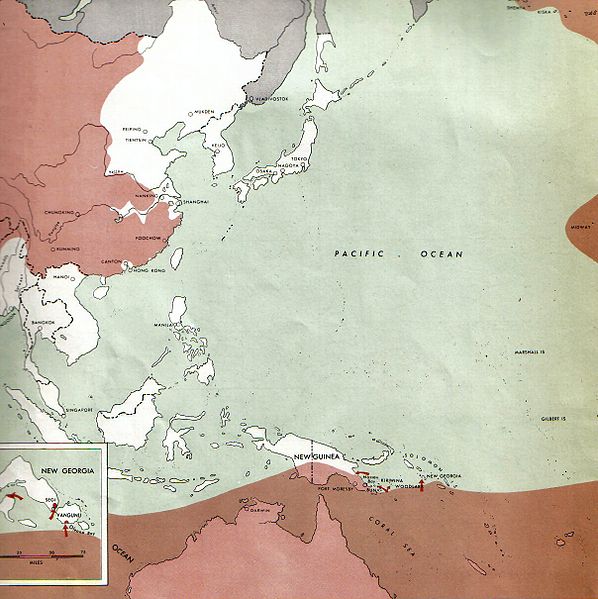
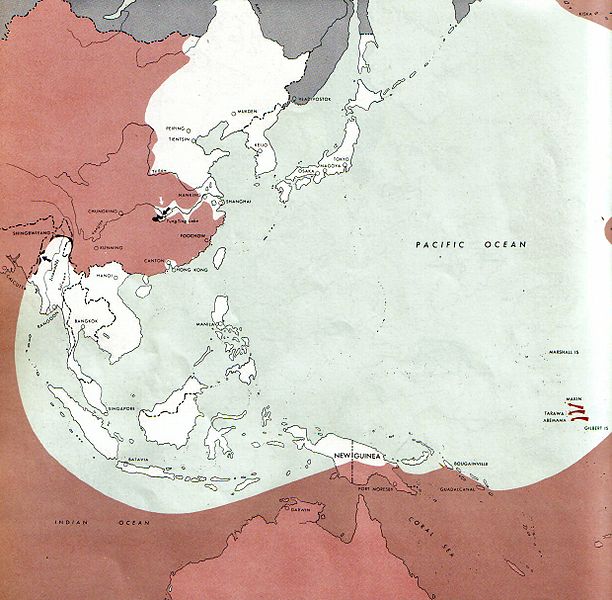
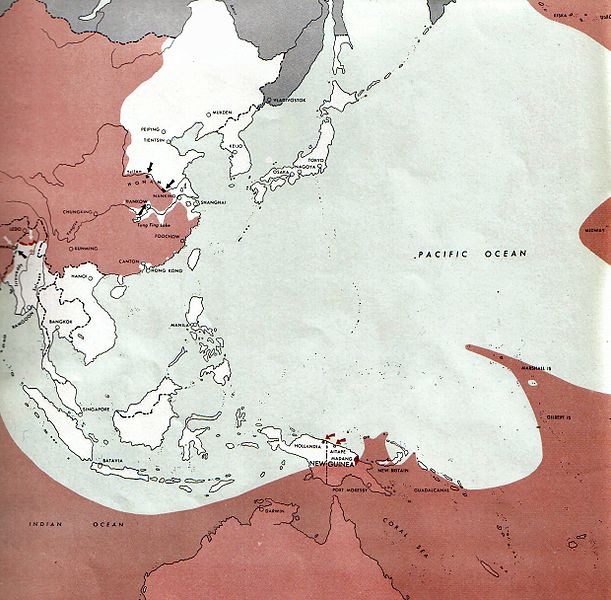

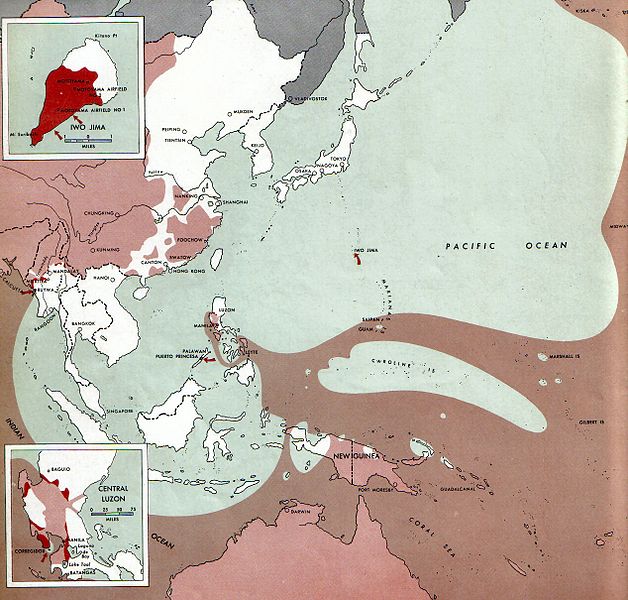
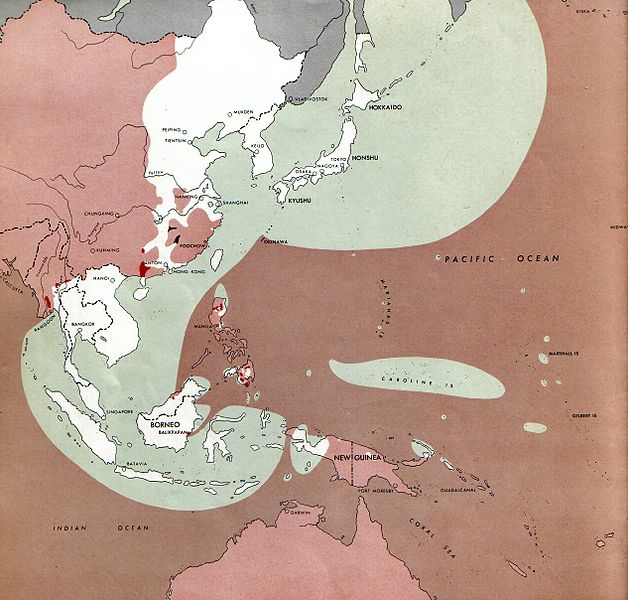

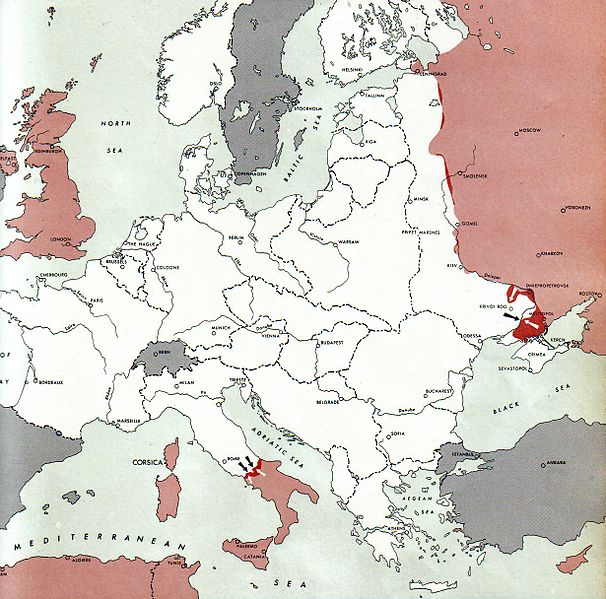

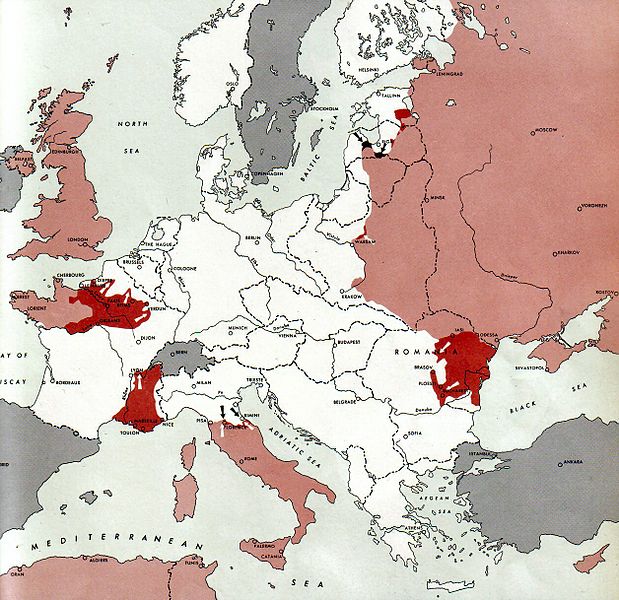
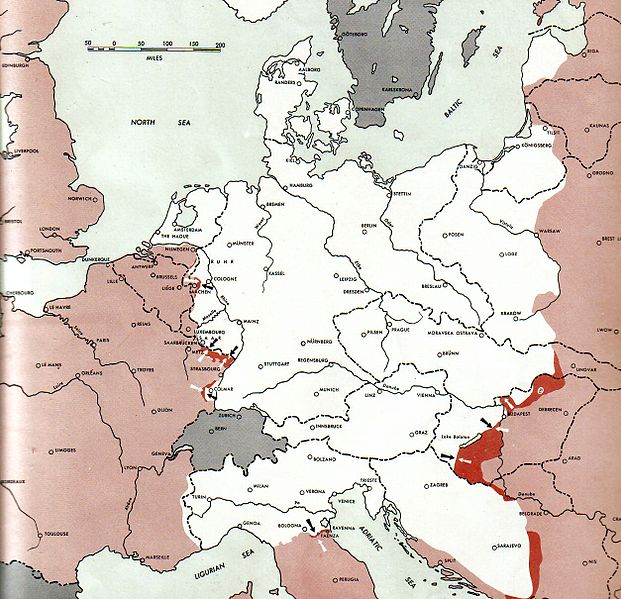
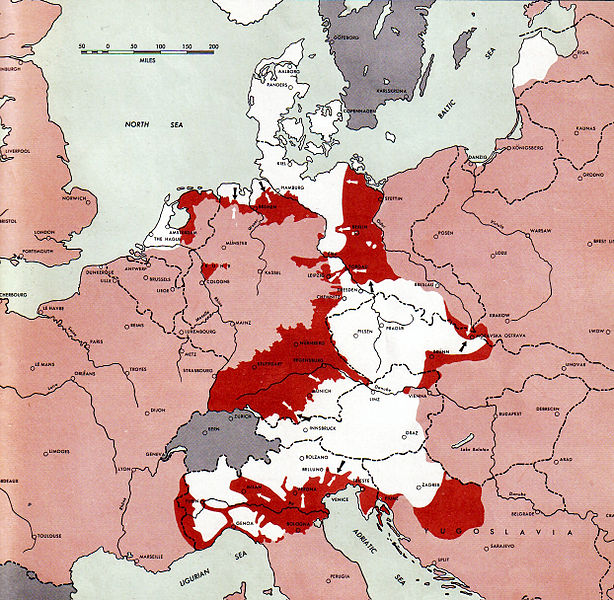

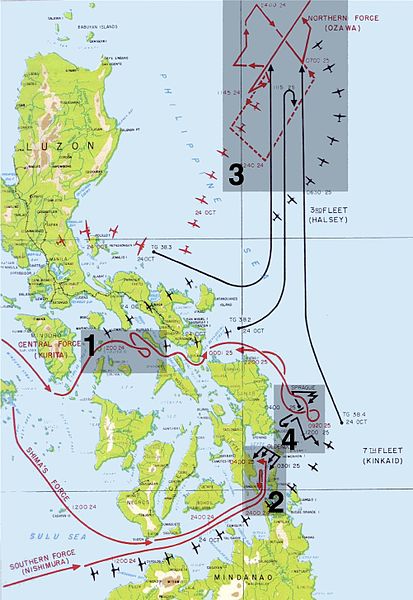

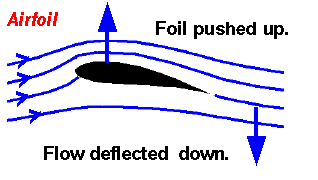

Wing drag force = F→
Wing lift force = F↑
Wing lift-to-drag coef.= Qw = F↑ / F→
Wing length = L
Wing width = W
Wing lift-to-drag coef.= Qw ~ L/W = Wing aspect ratio.
Width = ½ Area / Length
Qw Aspect Wing Wing Wing
ratio length width area
meter meter meter2
U-2 23 10.6 High-altitude spy plane
Albatros 20 1.7 Largest bird
Gossamer 20 10.4 14.6 1.4 41.3 Gossamer albatross, human-powered aircraft
Hang glider 15
Tern 12
Herring Gull 10
Airbus A380 7.5 7.5 36.3 11.6 845
Concorde 7.1 .7 11.4 15.7 358.2
Boeing 747 7 7.9 23.3 11.3 525
Cessna 150 7 2.6 4.5 1.7 15
Sparrow 4
Human wingsuit 2.5 1 1.0 1.0 2
Flying lemur ? Most capable gliding mammal. 2 kg max
Flying squirrel 2.0
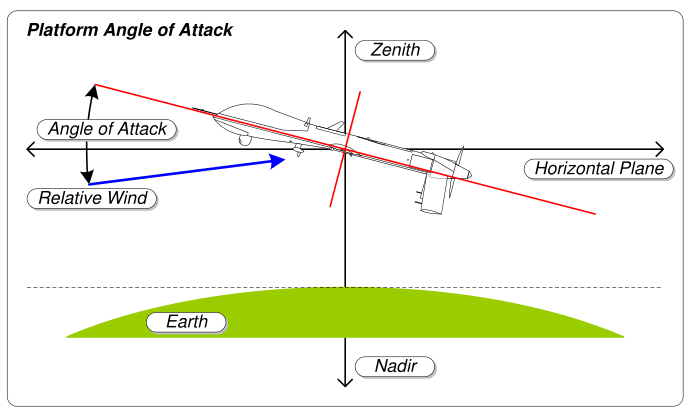
Air density = D = 1.22 kg/meter2
Velocity = V
Cross-sectional area = A
Drag coefficient = C
Drag force = F = ½ C D A V2
![]()
Human mass = M = 80 kg
Gravity = g = 10 meter/second2
Gravity force = F↓ = 800 Newton
Chute drag coefficient = C = 1 Dimensionless
Air density = D =1.22 kg/meter2
Parachute area = A = 100 meter2
Drag force = F↑ = ½ C D A V2 = F↓
Terminal velocity = V = 3.6 meter/second
Drag force = F = ½ C D A V2
Drag power = P = F V = ½ C D A V3
Drag coef Drag area Power Max speed
dimensionless meter2 Watt meter/second
Bike 1 .5 400 11
Car .4 3 300000 74
Cw
F-4 Phantom .021 (subsonic)
Cessna 310 .027
Airbus A380 .027
Boeing 747 .031
F-4 Phantom .044 (supersonic)

Drag force = F→
Lift force = F↑ = Fgrav
Wing lift/drag ratio = Qw = F↑ / F→
Horizontal speed = V→
Vertical descent speed = V↓
Glide ratio = G = V→ / V↑
Gravitational force = Fgrav
Drag power = Pdrag = F→ V→
Power from gravity = Pgrav = Fgrav V↓
If the glider descends at constant velocity,
Pdrag = Pgrav
The goal of a glider is to maximize the glide ratio
V→ / V↓ = (Pdrag / F→) / (Pgrav / Fgrav)
= Fgrav / F→
= Qw
The glide ratio is equal to the lift coefficient. Qw = G
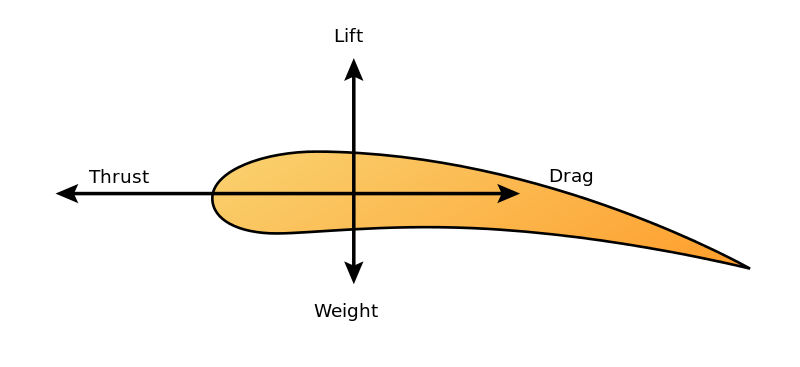
Air density = D
Wing area = A
Wing drag coefficient = Cw
Wing drag = F→ = ½ Cw D A V2
Wing lift = F↑
Wing lift/drag ratio = Qw = F↑ / F→
Aircraft speed = V
Aircraft mass = M
Gravity = g = 9.8 meters/second2
Gravity force = Fgrav= M g
Engine force = Feng = V F→
Drag power = P→ = F→ V = ½ Cw D A V3
Agility (Power/mass) = p = P→ / M = V g / Qw
For flight at constant velocity,
Feng = F→ Horizontal force balance
F↑ = Fgrav Vertical force balance
F↑ = F→ Qw Definition of the wing lift/drag coefficient
Fgrav= Fdrag Qw → M g = Qw ½ Cw D A V2
Cruising speed = V = M½ g½ Qw-½ (½ Cw D A)-½ ~ M1/6
Agility (Power/mass) = p = M½ g3/2 Qw-3/2 (½ Cw D A)-½ ~ M1/6
Aircraft energy/mass = e ~ M0
Flight time = T = e/p ~ M-1/6
Range = X = V T ~ M0

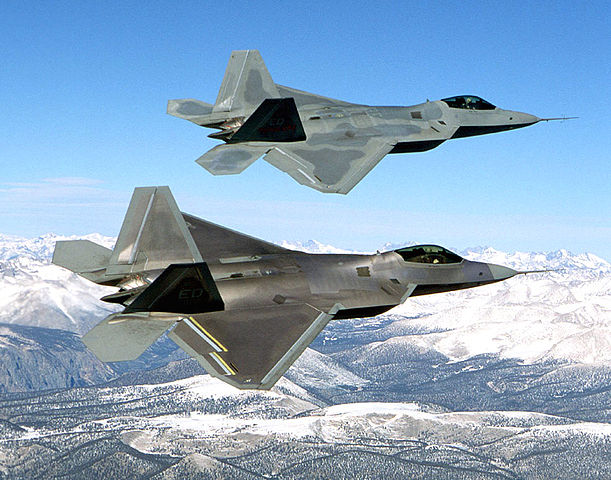
.jpg)
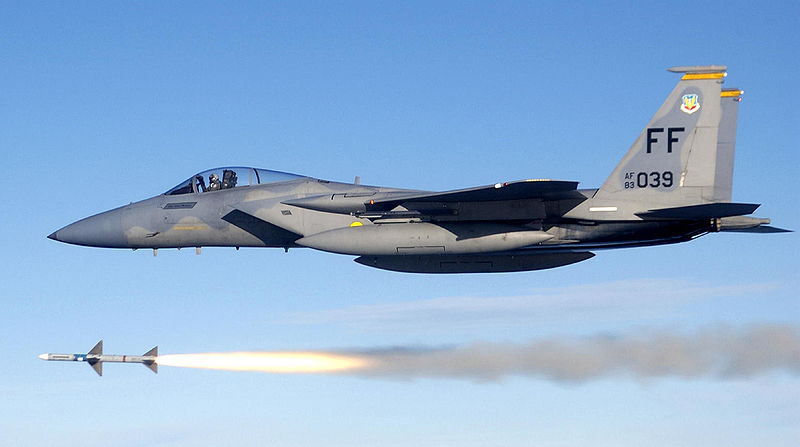
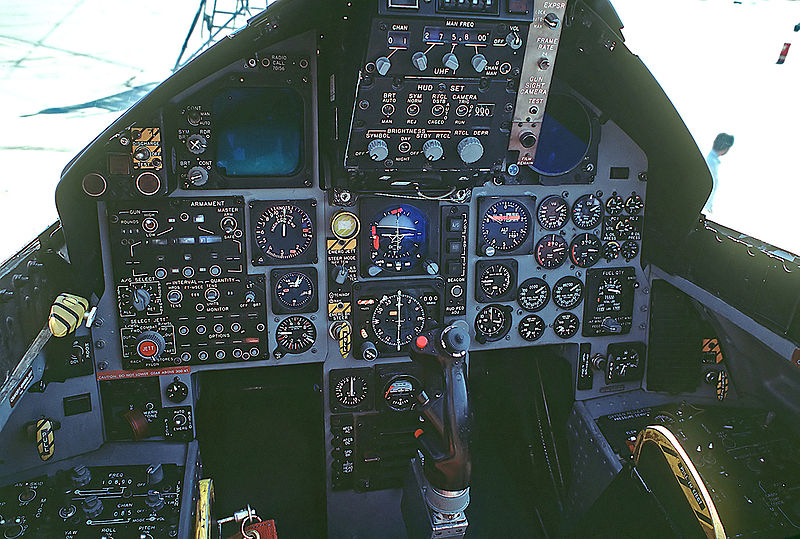
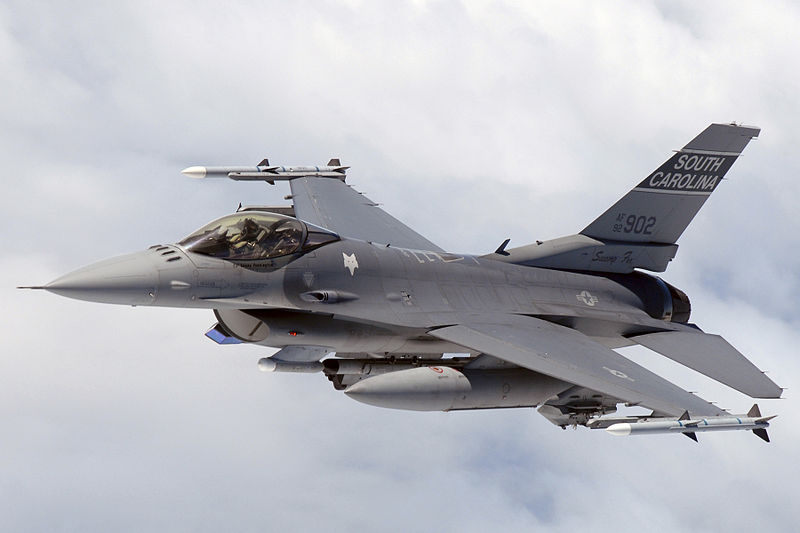
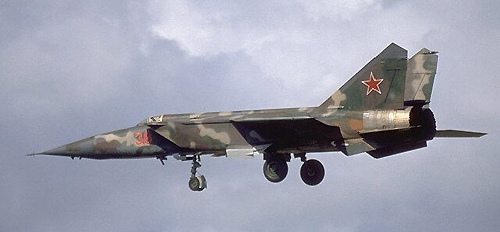
Speed Mass Takeoff Ceiling Thrust Range Cost Number Year Stealth
Mach ton ton km kN km M$
SR-71 Blackbird 3.3 30.6 78.0 25.9 302 5400 32 1966
MiG-25 Foxbat 2.83 20.0 36.7 20.7 200.2 1730 1186 1970
MiG-31 Foxhound 2.83 21.8 46.2 20.6 304 1450 519 1981
F-22A Raptor 2.51 19.7 38.0 19.8 312 2960 150 195 2005 *
F-15 Eagle 2.5 12.7 30.8 20.0 211.4 4000 28 192 1976
F-14 Tomcat 2.34 19.8 33.7 15.2 268 2960 712 1974
MiG-29 Fulcrum 2.25 11.0 20.0 18.0 162.8 1430 29 1600 1982
Su-35 2.25 18.4 34.5 18.0 284 3600 40 48 1988
F-4 Phantom II 2.23 13.8 28.0 18.3 1500 5195 1958
Chengdu J-10 2.2 9.8 19.3 18.0 130 1850 28 400 2005
F-16 Falcon 2.0 8.6 19.2 15.2 127 1200 15 957 1978
Chengdu J-7 2.0 5.3 9.1 17.5 64.7 850 2400 1966
Dassault Rafale 1.8 10.3 24.5 15.2 151.2 3700 79 152 2001
Euro Typhoon 1.75 11.0 23.5 19.8 180 2900 90 478 2003
F-35A Lightning 1.61 13.2 31.8 15.2 191 2220 85 77 2006 *
B-52 .99 83.2 220 15.0 608 14080 84 744 1952
B-2 Bomber .95 71.7 170.6 15.2 308 11100 740 21 1997 *
A-10C Warthog .83 11.3 23.0 13.7 80.6 1200 19 291 1972
Drone RQ-180 ~15 18.3 ~2200 2015 *
Drone X-47B .95 6.4 20.2 12.2 3890 2 2011 * Carrier
Drone Avenger .70 8.3 15.2 17.8 2900 12 3 2009 *
Drone RQ-4 .60 6.8 14.6 18.3 34 22800 131 42 1998
Drone Reaper .34 2.2 4.8 15.2 5.0 1852 17 163 2007
Drone RQ-170 15 20 2007 *
India HAL AMCA 2.5 14.0 36.0 18.0 250 2800 ? 0 2023 *
India HAL FGFA 2.3 18.0 35.0 20.0 352 3500 ? 0 >2020 *
Mitsubishi F-3 2.25 9.7 ? ? 98.1 3200 ? 1 2024 *
Chengdu J-20 2.0 19.4 36.3 ? 359.8 ? 110 4 2018 *
Sukhoi PAK FA 2.0 18.0 35.0 20.0 334 3500 50 6 2018 *
Shenyang J-31 1.8 17.6 25.0 ? 200 4000 ? 0 2018 *
Mach 1 = 295 m/s
5th generation fighters: F-22, F-35, X-2, HAL AMCA, J-20, J-31, Sukhoi PAK FA
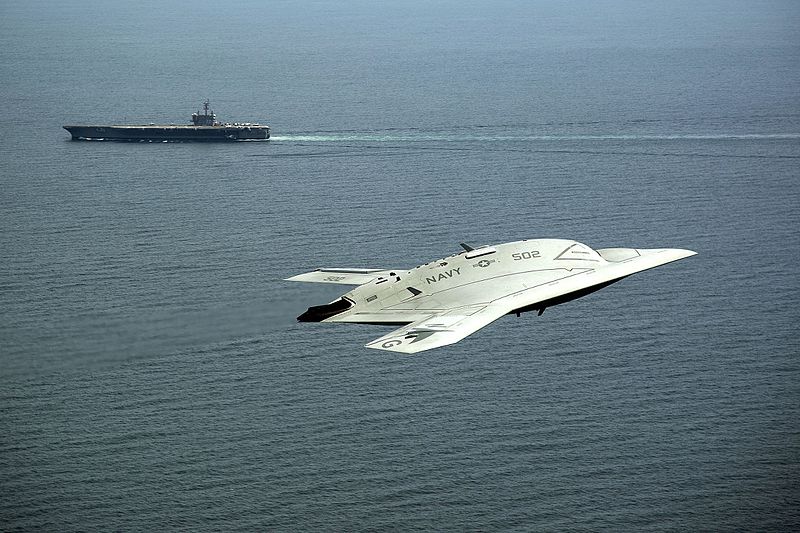
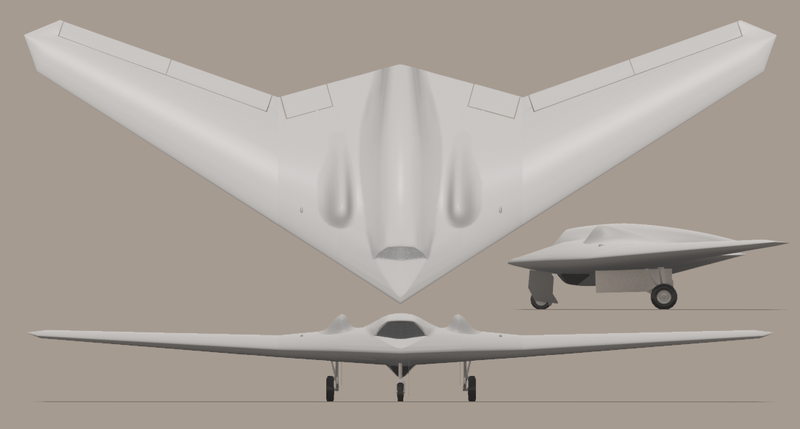

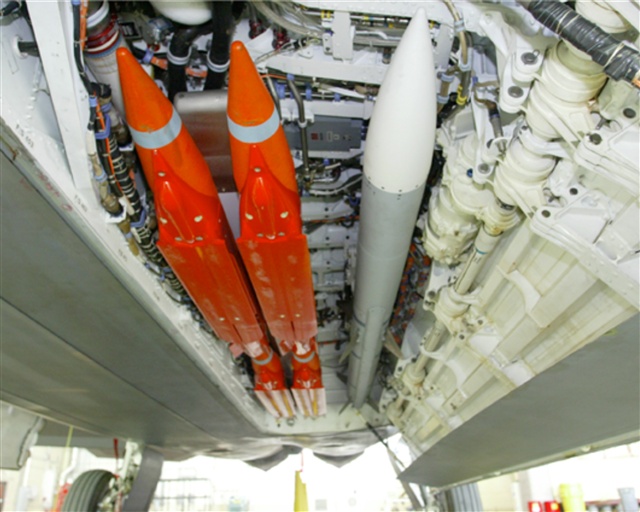
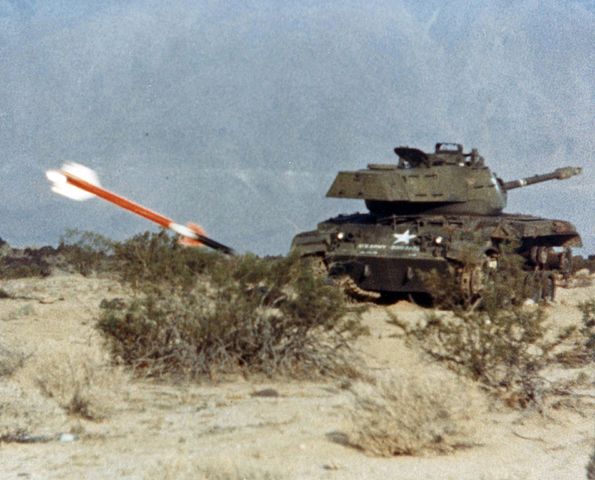
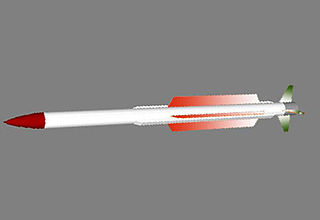
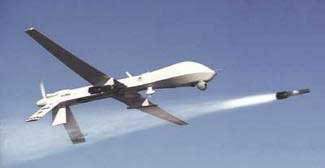

Mach Range Missile Warhead Year Engine
km kg kg
Russia R-37 6 400 600 60 1989 Solid rocket
Japan AAM-4 5 100 224 ? 1999 Ramjet
India Astra 4.5+ 110 154 15 2010 Solid rocket
EU Meteor 4+ 200 185 ? 2012 Ramjet
Russia R-77-PD 4 200 175 22.5 1994 Ramjet
USA AIM-120D 4 180 152 18 2008 Solid rocket
Israel Derby-IR 4 100 118 23 Solid rocket
Israel Rafael 4 50 118 23 1990 Solid rocket
France MICA 4 50 112 12 1996 Solid rocket
Israel Python 5 4 20 105 11 Solid rocket
Russia K-100 3.3 400 748 50 2010 Solid rocket
UK ASRAAM 3+ 50 88 10 1998 Solid rocket
Germany IRIS-T 3 25 87.4 2005 Solid rocket
USA AIM-9X 2.5+ 35 86 9 2003 Solid rocket
USA Hellfire 1.3 8 49 9 1984 Solid rocket AGM-114
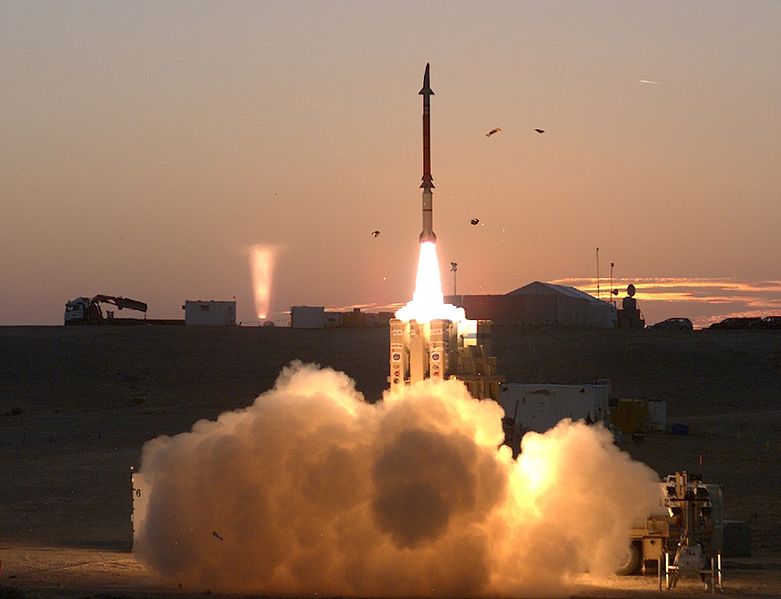
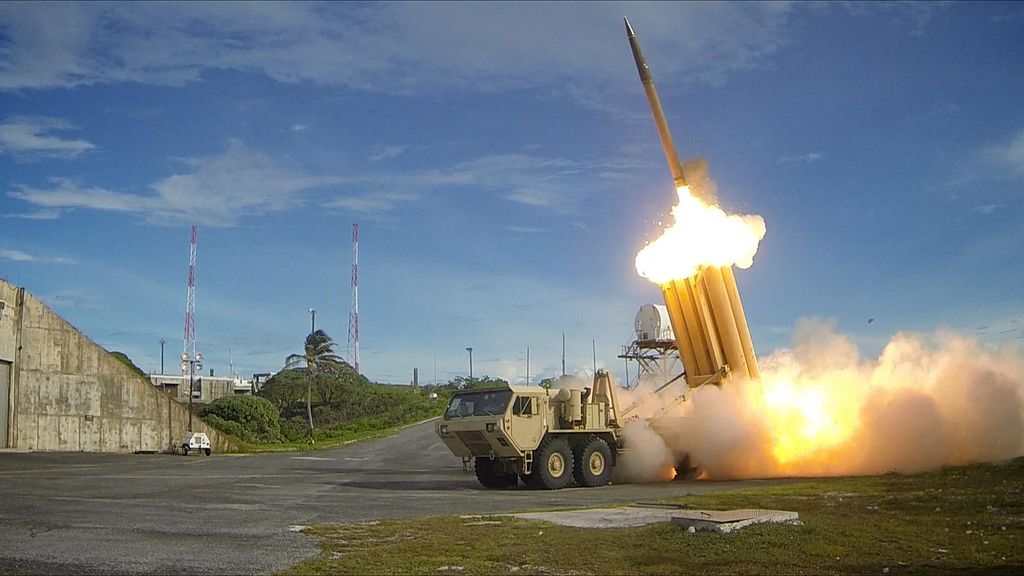
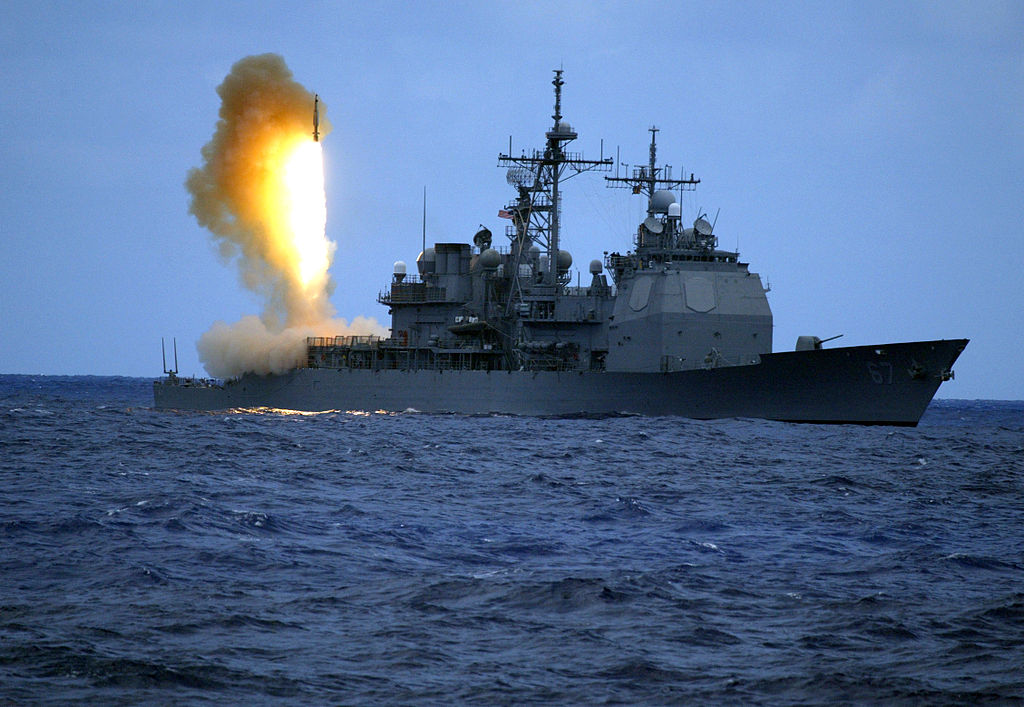
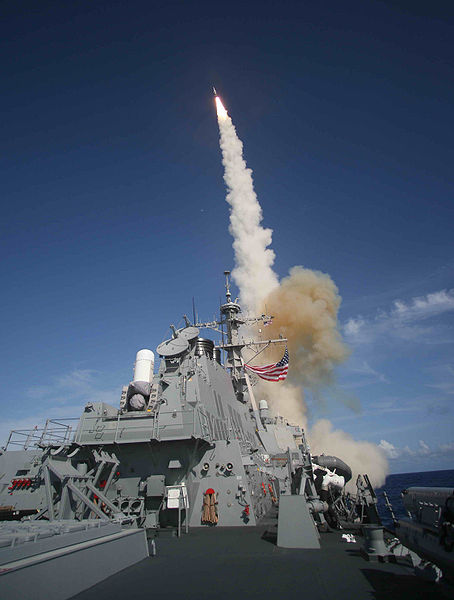
_02.jpg)
Mach Range Missile Warhead Year Engine Stages Anti
km kg kg missile
USA SM-3 15.2 2500 1500 0 2009 Solid rocket 4 *
Israel Arrow 9 150 1300 150 2000 Solid rocket 2
USA THAAD 8.24 200 900 0 2008 Solid rocket *
USA David 7.5 300 2016 Solid rocket *
Russia S-400 6.8 400 1835 180 2007 Solid rocket *
India Prithvi 5 2000 5600 2006 Solid, liquid 2 *
India AAD Ashwin 4.5 200 1200 0 2007 Solid rocket 1
Taiwan Sky Bow 2 4.5 150 1135 90 1998 Solid rocket
China HQ-9 4.2 200 1300 180 1997 Solid rocket 2
USA Patriot 3 4.1 35 700 90 2000 Solid rocket *
China KS-1 4.1 50 900 100 2006 Solid rocket *
USA RIM-174 3.5 460 1500 64 2013 Solid rocket 2
India Barak 8 2 100 275 60 1015 Solid rocket 2
Japan Chu-SAM 570 73 2003 Solid rocket
Korea KM-SAM 40 400 2015 Solid rocket
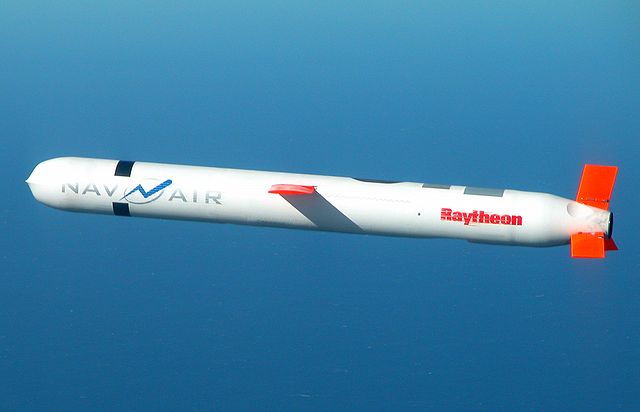
Mach Range Missile Warhead Year Engine Launch
km kg kg platform
USA Tomahawk .84 2500 1600 450 1983 Turbofan Ground
USA AGM-129 .75 3700 1300 130 1990 Turbofan B-52 Bomber
USA AGM-86 .73 2400 1430 1361 1980 Turbofan B-52 Bomber
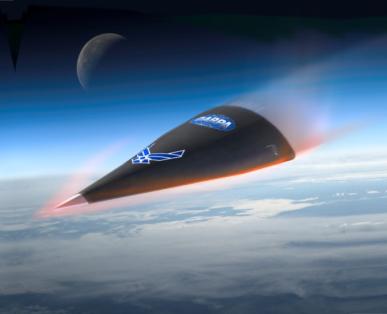
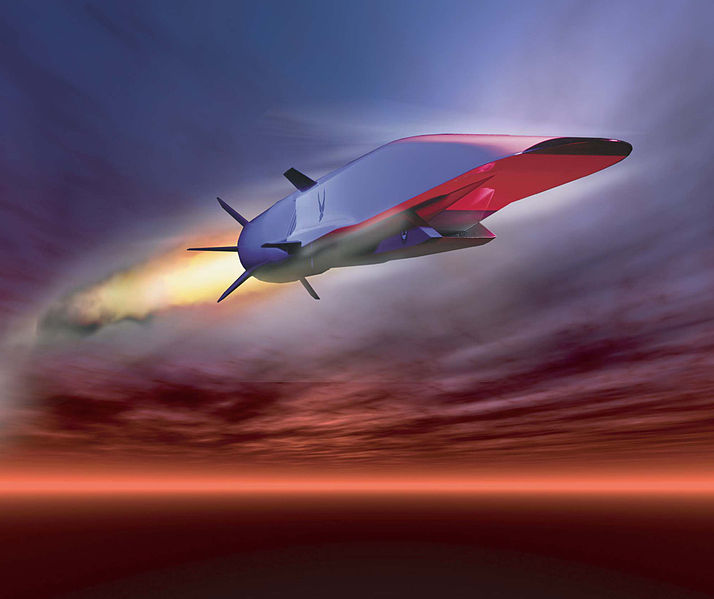
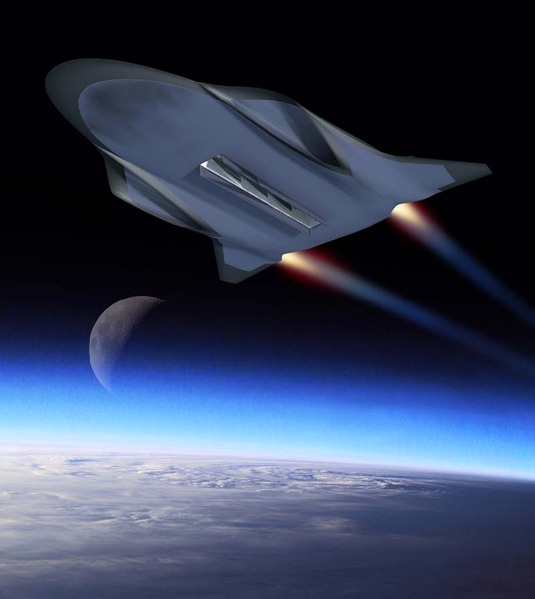
Speed Mass Range Year
mach tons km
USA SR-72 6 Future. Successor to the SR-71 Blackbird
USA HSSW 6 900 Future. High Speed Strike Weaspon
USA HTV-2 20 17000 2 Test flights
USA X-41 8 Future
USA X-51 5.1 1.8 740 2013 Tested. 21 km altitude. Will become the HSSW
Russia Object 4202 10 Tested
India HSTDV 12 Future
China Wu-14 10 2014 7 tests. also called the DZ-ZF
The SR-72 has two engines: a ramjet for below Mach 3 and a ramjet/scramjet for above
Mach 3. The engines share an intake and thrust nozzle.
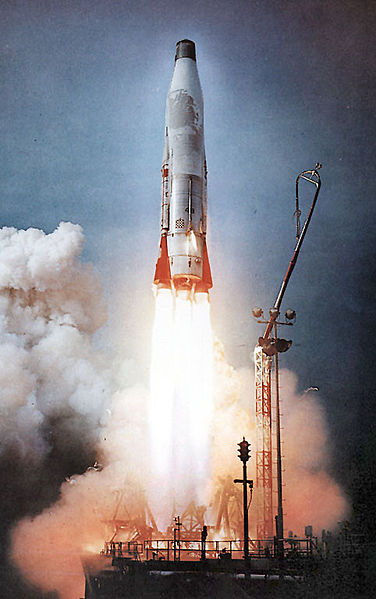
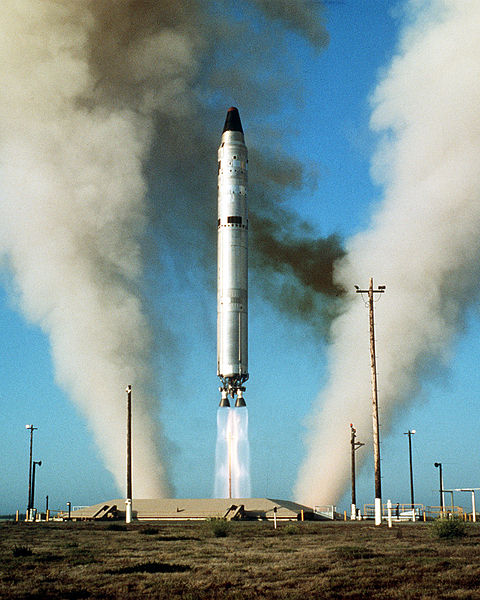
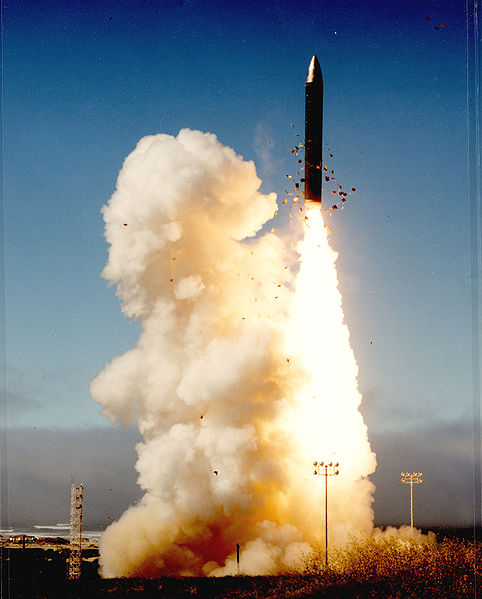
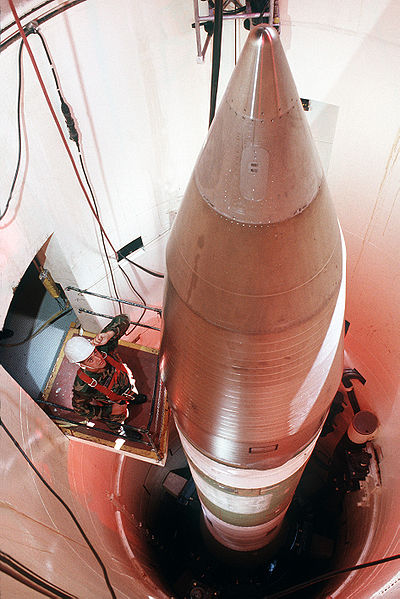

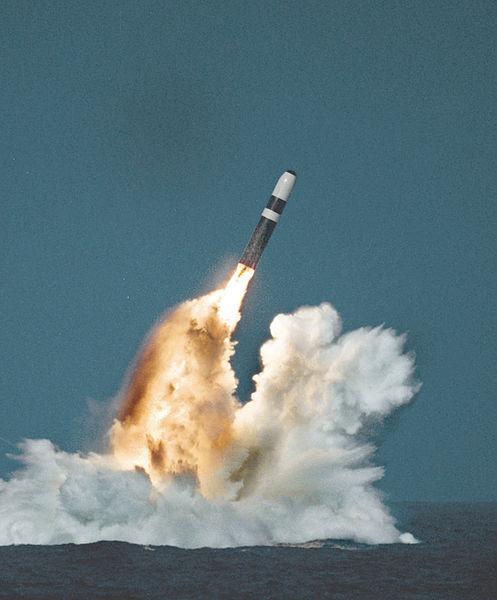
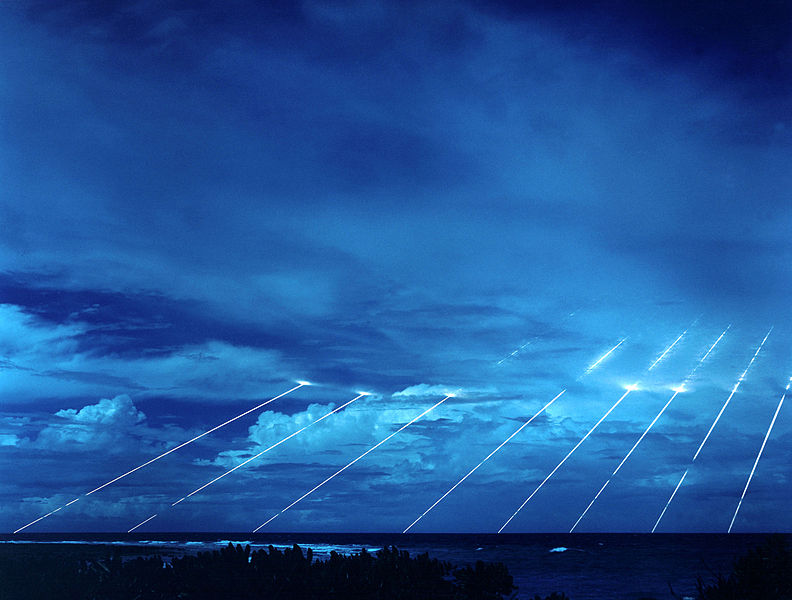
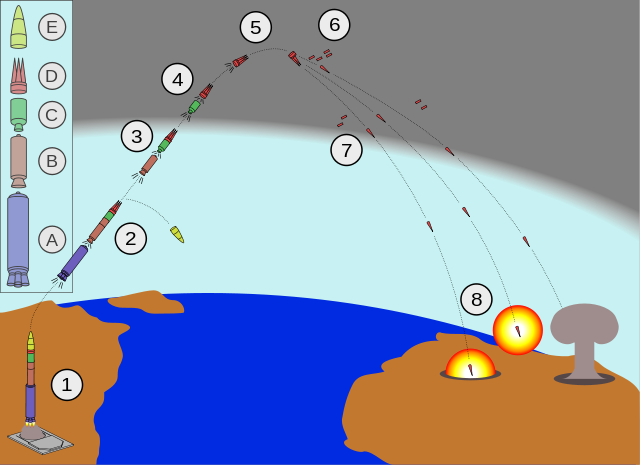
Payload Paylod Range Mass Launch Year
(tons) (Mtons) (km) (tons)
USA Titan 2 9 15000 154 Silo 1962 Inactive
USA Minuteman 3 .9 13000 35.3 Silo 1970
USA Trident 2 .95 11300 58.5 Sub 1987
USA Titan 3.75 10200 151.1 Silo 1959 Inactive
USA Peacekeeper 3 9600 96.8 Silo 1983 Inactive
Russia RS-24 1.2 12000 49 Road 2007
Russia Voevoda 8.7 8 11000 211.4 Silo 1986
Russia Layner 11000 40 Sub 2011
Russia RS-28 Sarmat 10 10000 >100 Silo 2020 Liquid rocket
Russia Bulava .9 10000 36.8 Sub 2005
France M51.1 1 10000 52 Sub 2006
China DF-5B 8 15000 183 Silo 2015
China DF-5A 4 15000 183 Silo 1983
China JL-2 6 12000 42 Sub 2001
China DF-5 5 12000 183 Silo 1971
China DF-31A 3 12000 42 Road
China DF-31 1 8000 42 Road 1999
China DF-4 3.3 7000 82 Silo 1974
India Surya 15 16000 70 Road 2022
India Agni-VI 10 12000 70 Road 2017
India Agni-V 6 8000 50 Road 2012
India K-4 2.5 3500 17 Sub 2016 Solid. Arihant nuclear sub
India K-15 ~6.5 750 1.0 Sub 2010 Solid. 2 stages. Arihant nuclear sub
Israel Jericho 3 .75 11500 30 Road 2008
N. Kor. Taepodong-2 6000 79.2 Pad 2006
Pakis. Shaheen 3 2750 Road 2015 Solid. 2 stages.
Pakis. Shaheen 2 2000 25 Road 2014 Solid. 2 stages.
Pakis. Ghauri 2 1.2 1800 17.8 Road
Pakis. Ghauri 1 .7 1500 15.8 Road 2003 Liquid. 1 stage.
Iran Shabab 3 1.0 1930 2003
Payload in "tons" represents the mass of the payload.
Payload in "Mtons" is the nuclear detonation payload in terms of tons of TNT.

© Jason Maron, all rights reserved.
Data from Wikipedia unless otherwise specified.